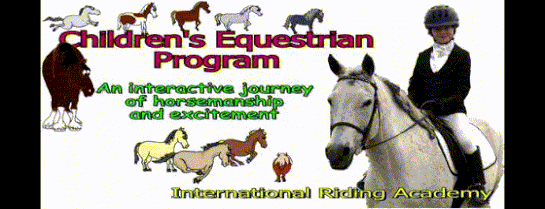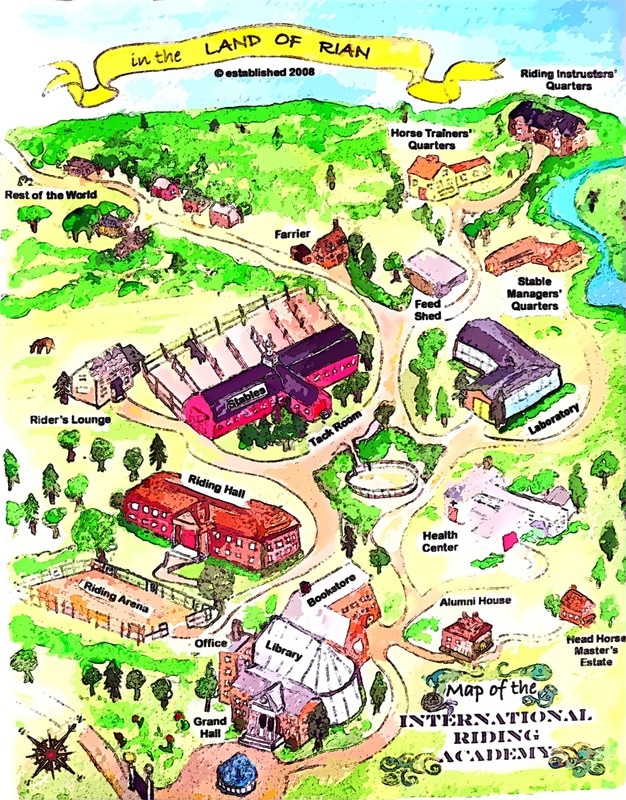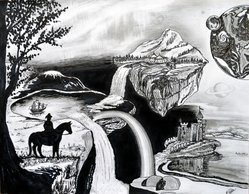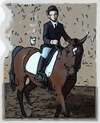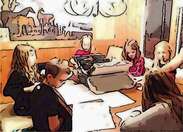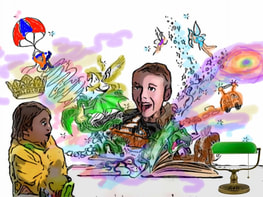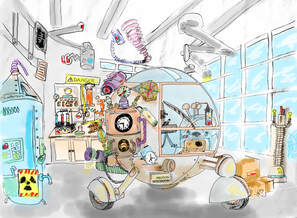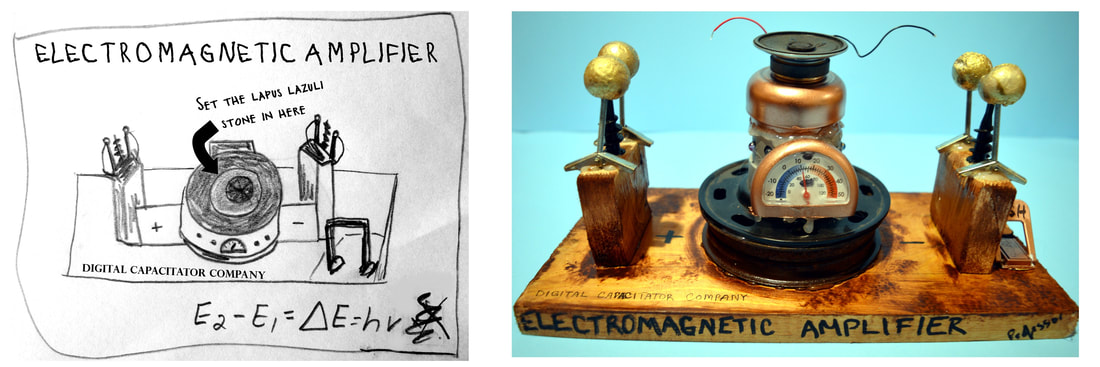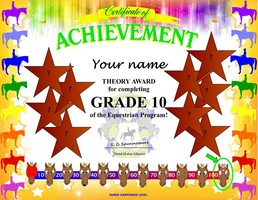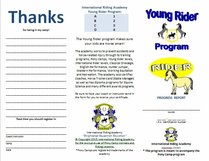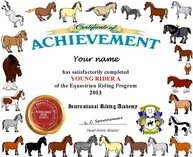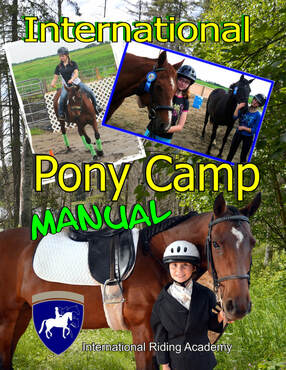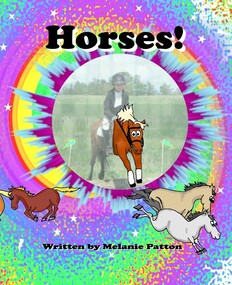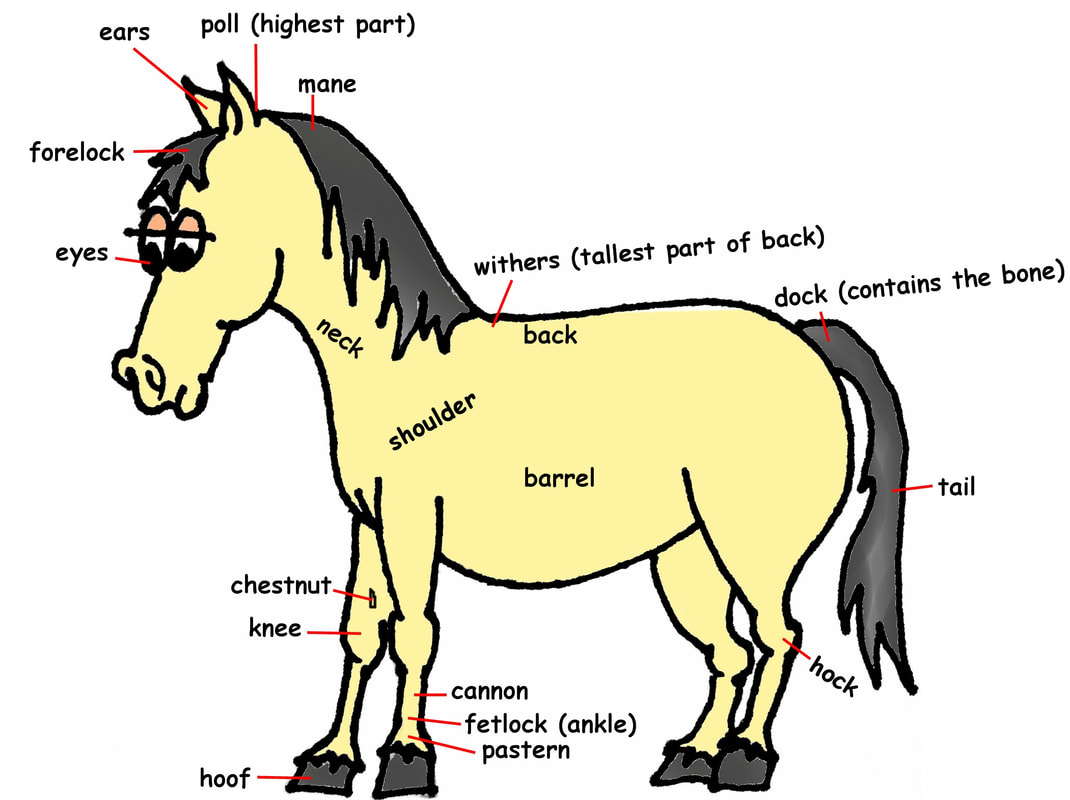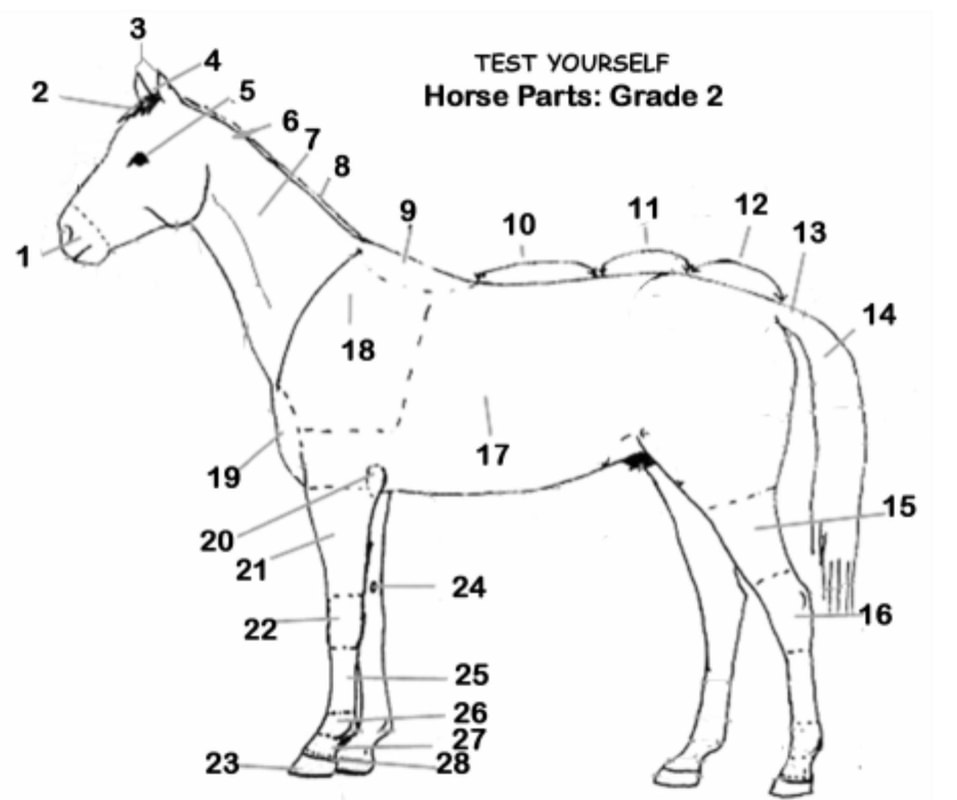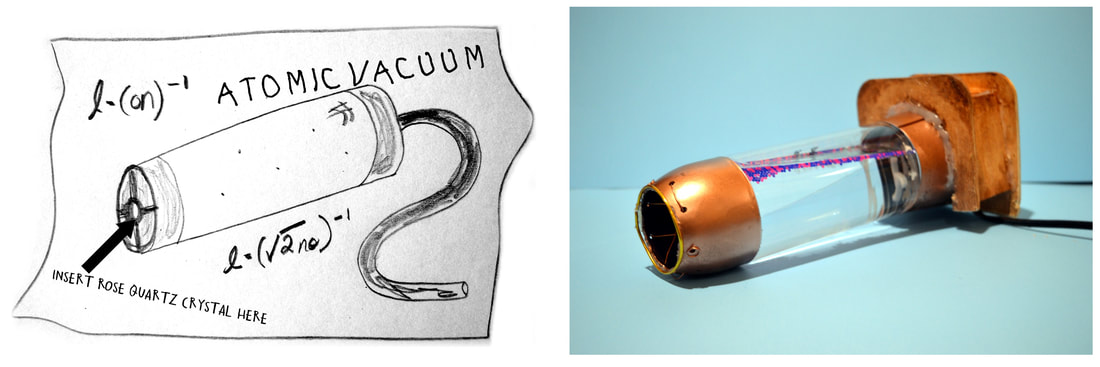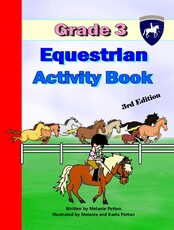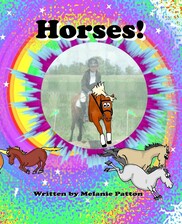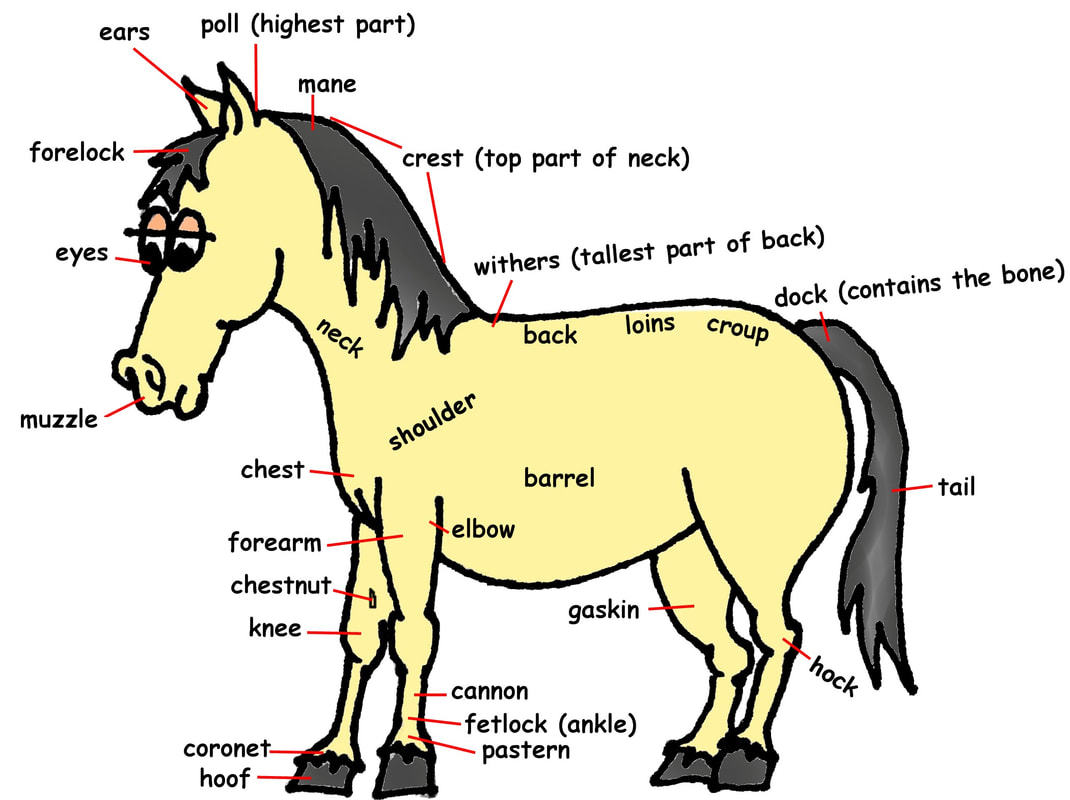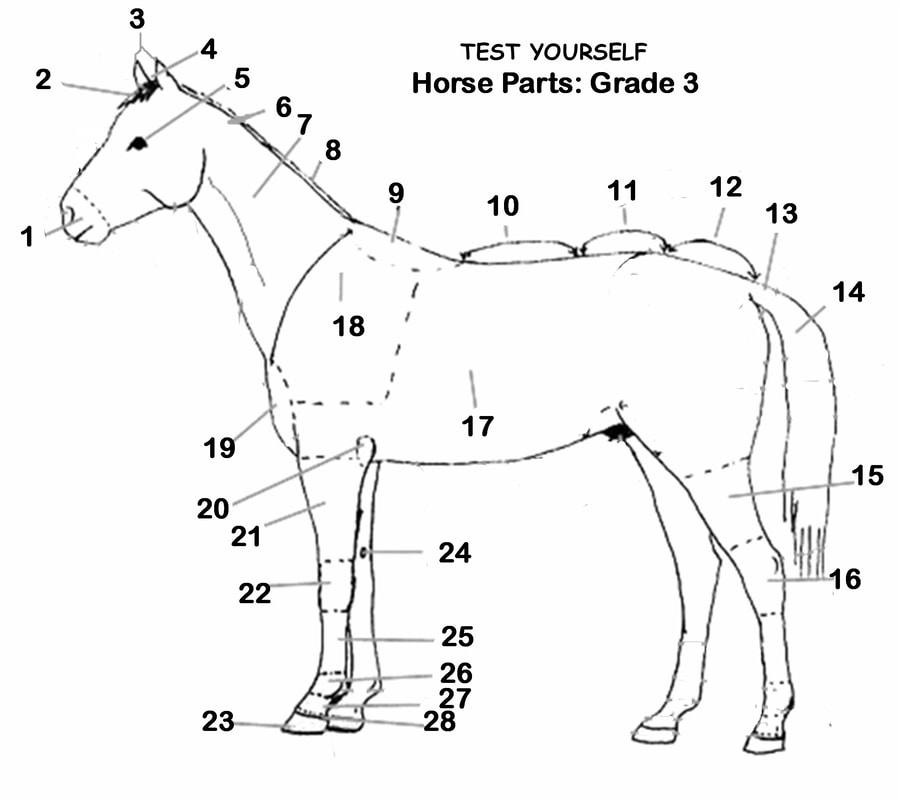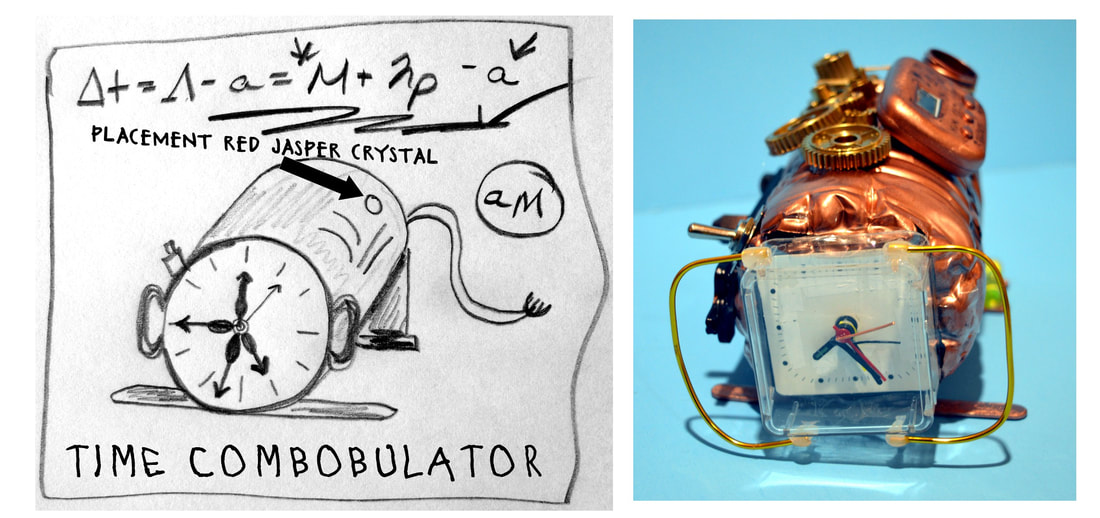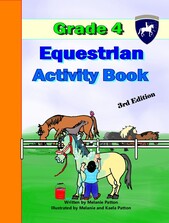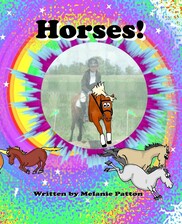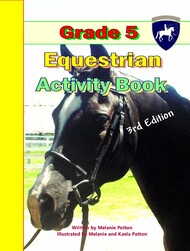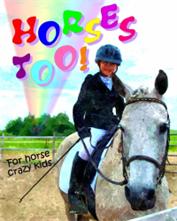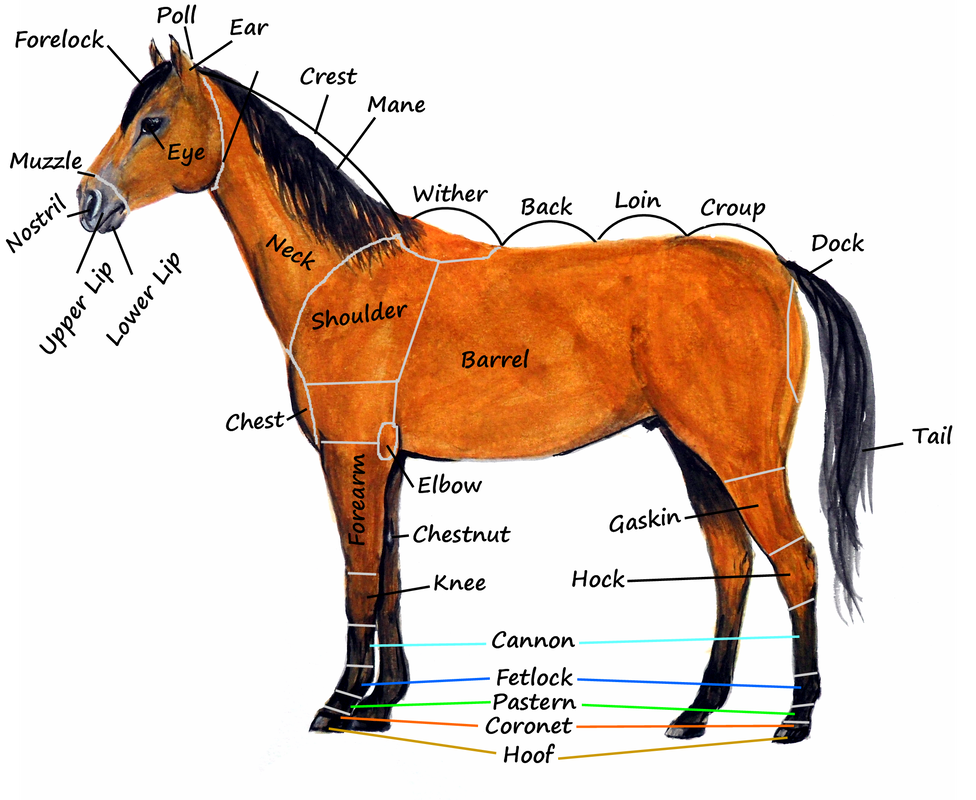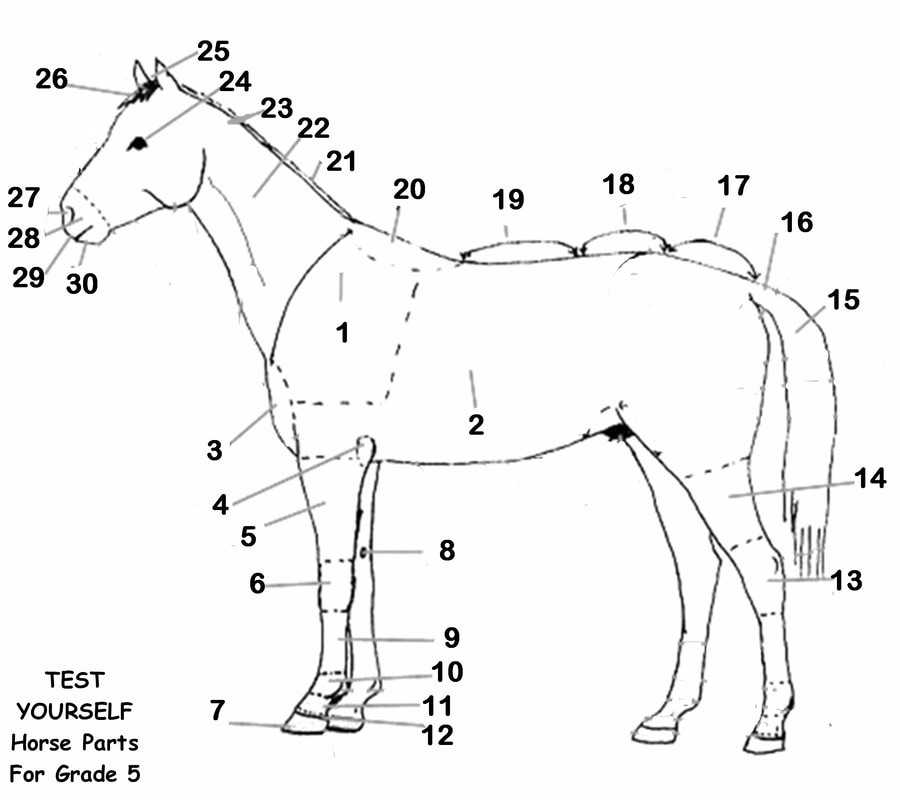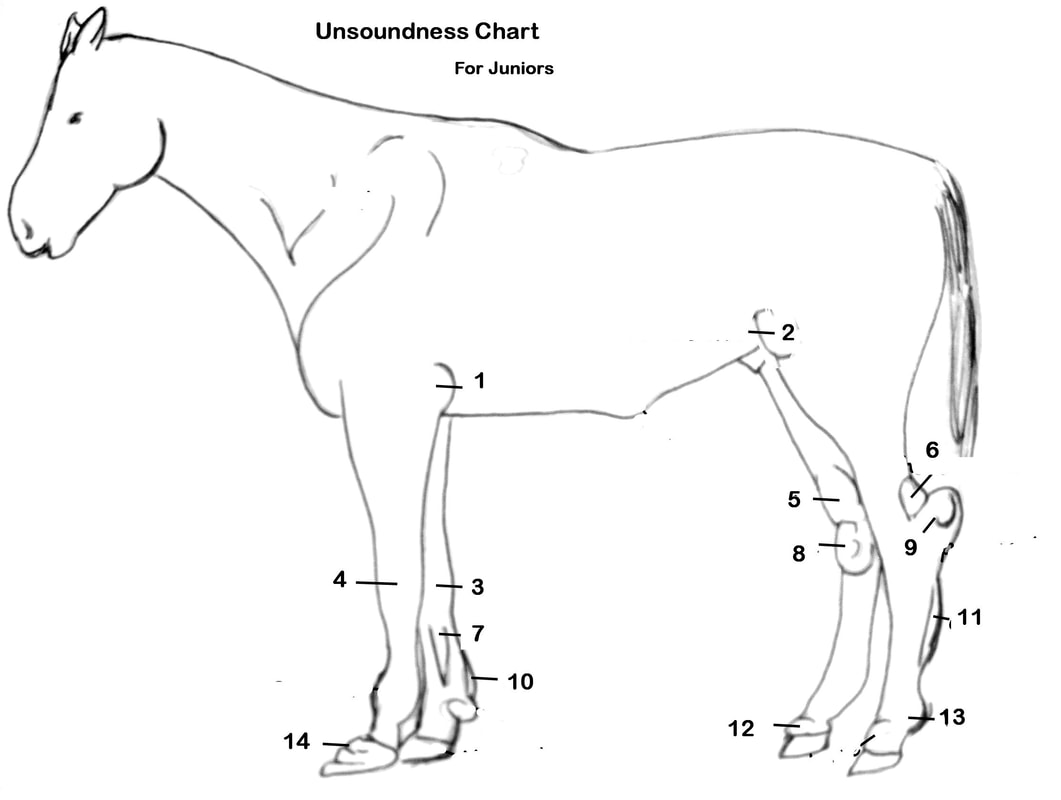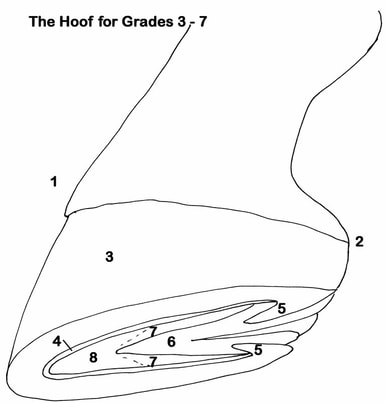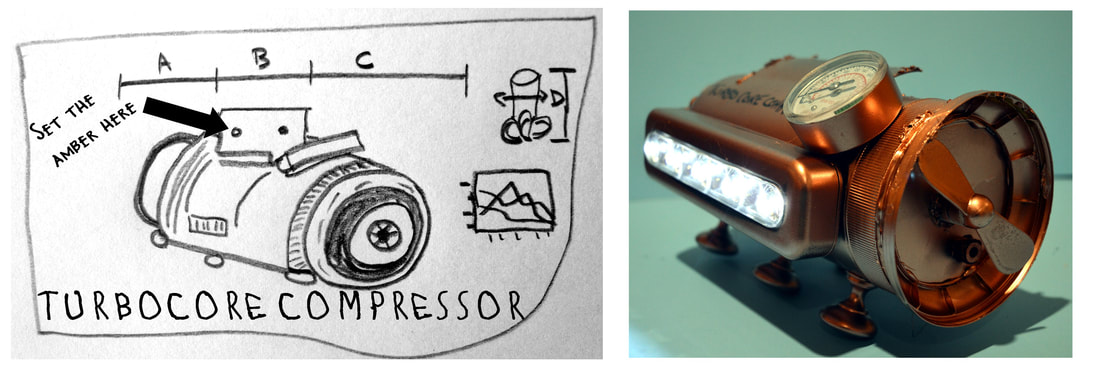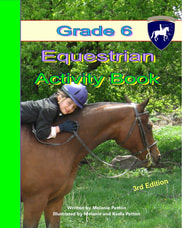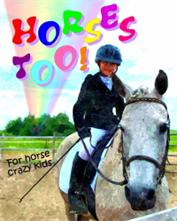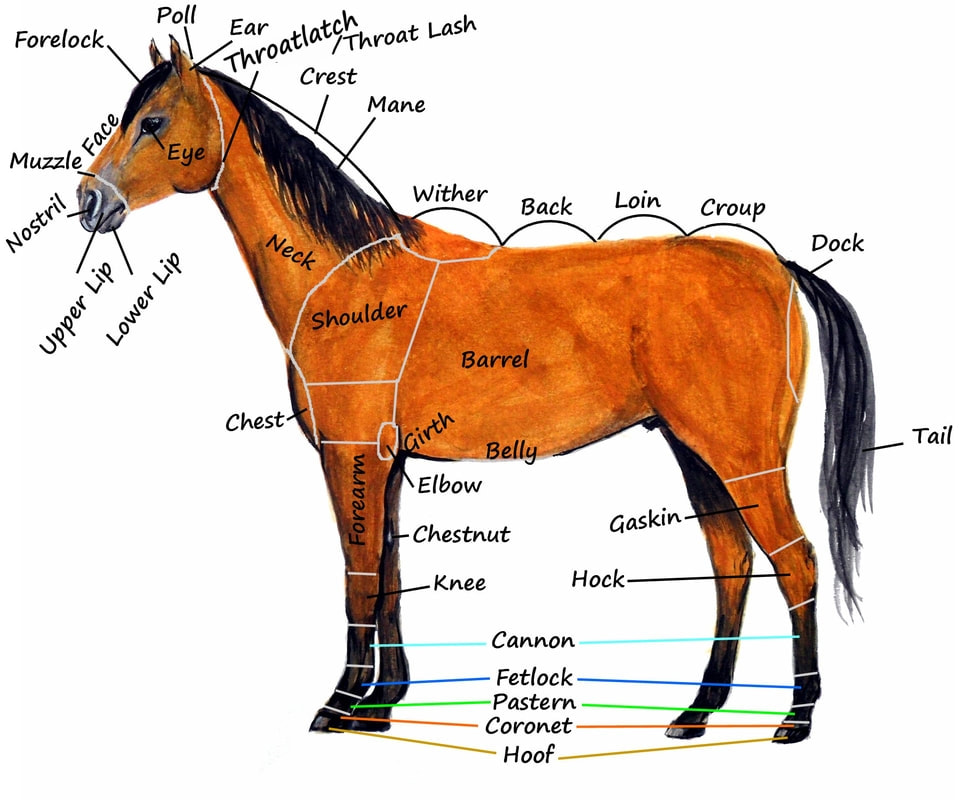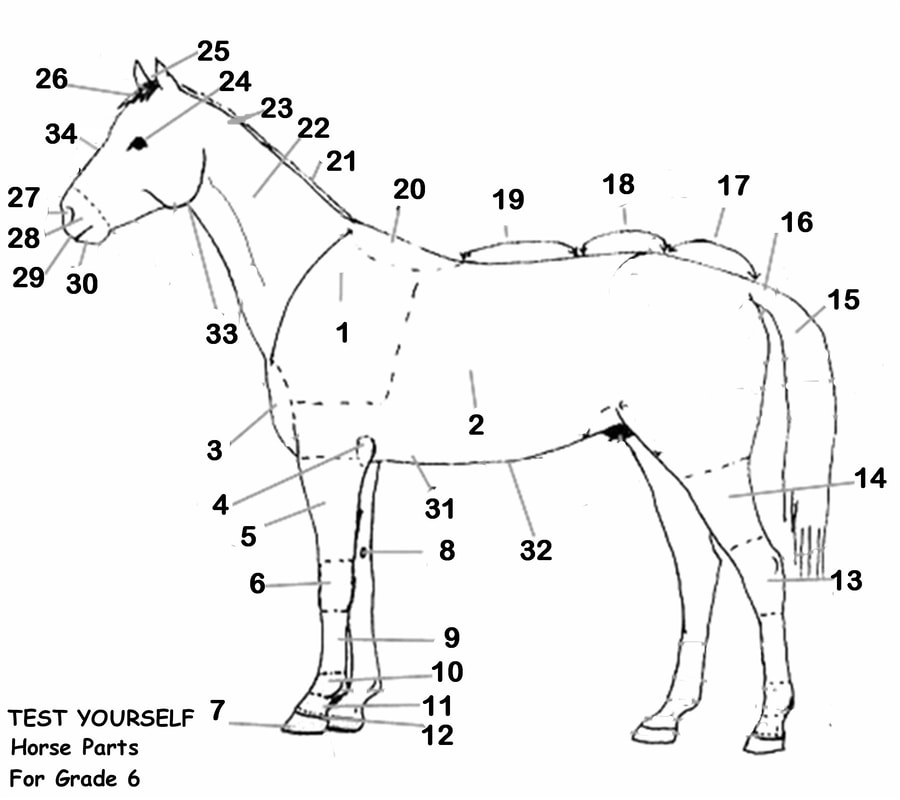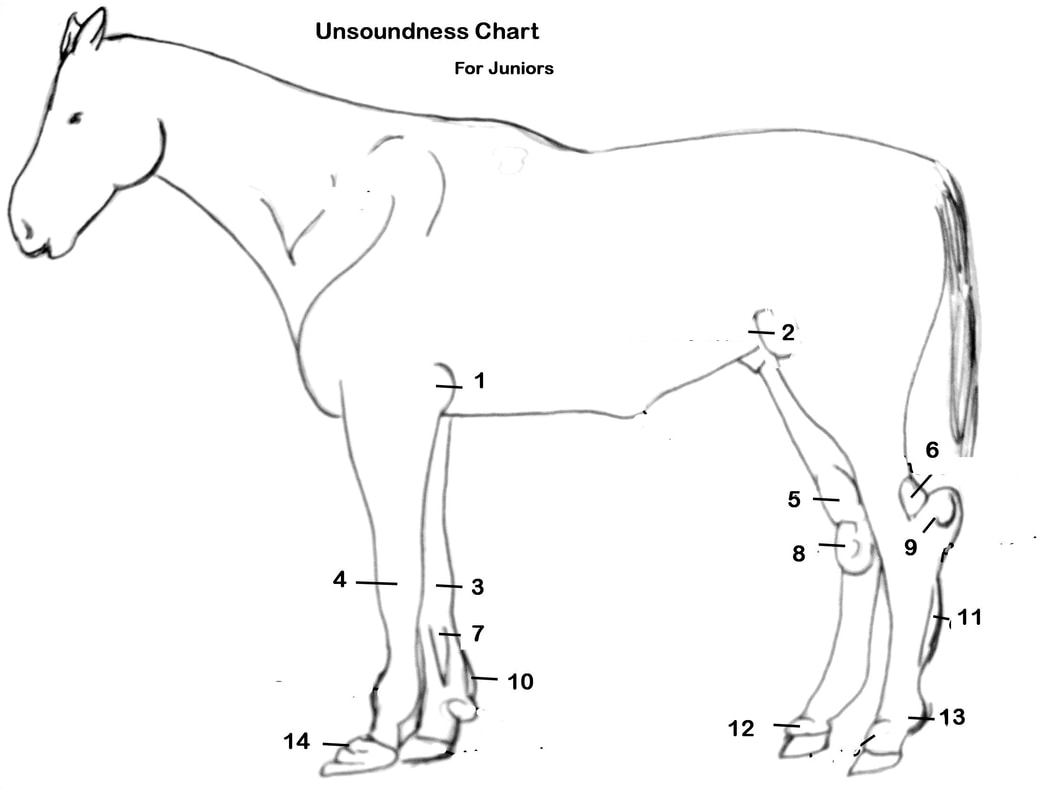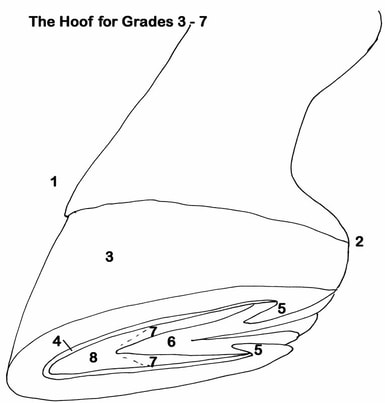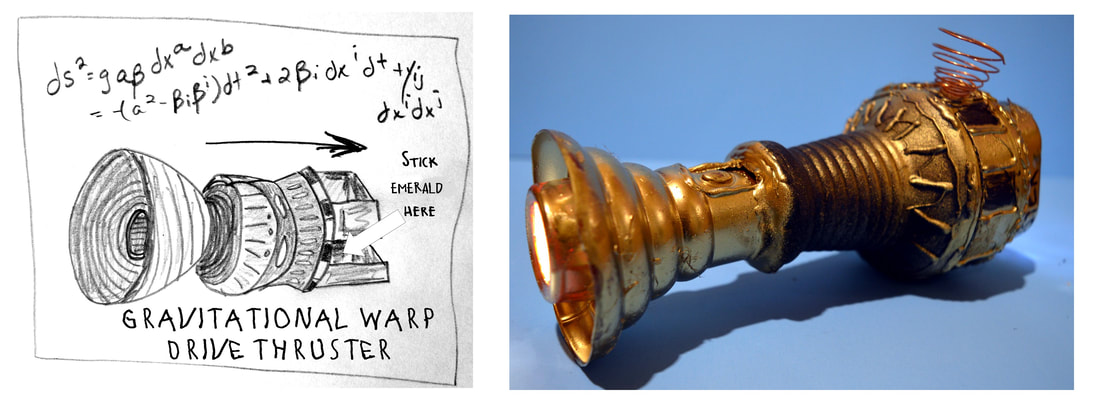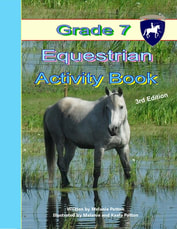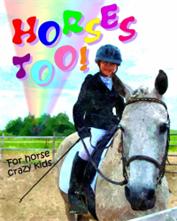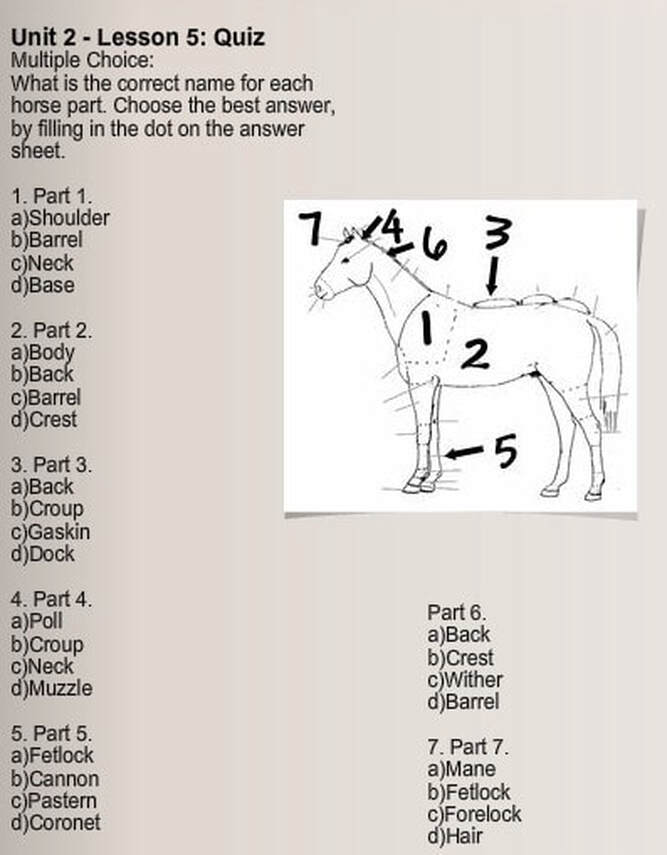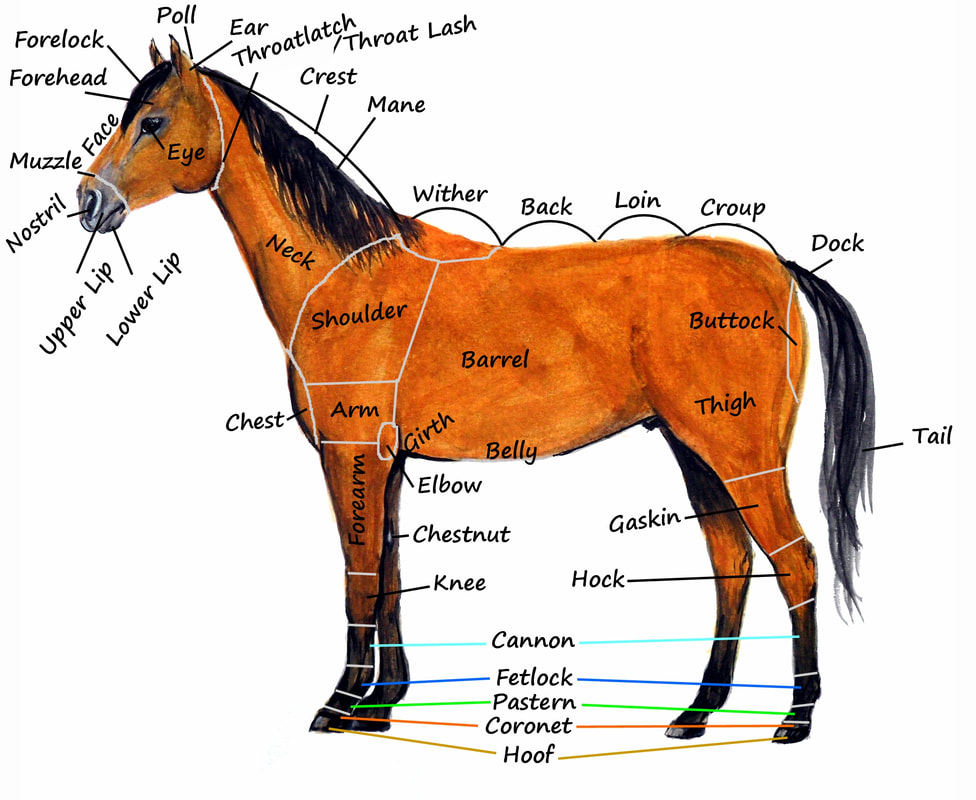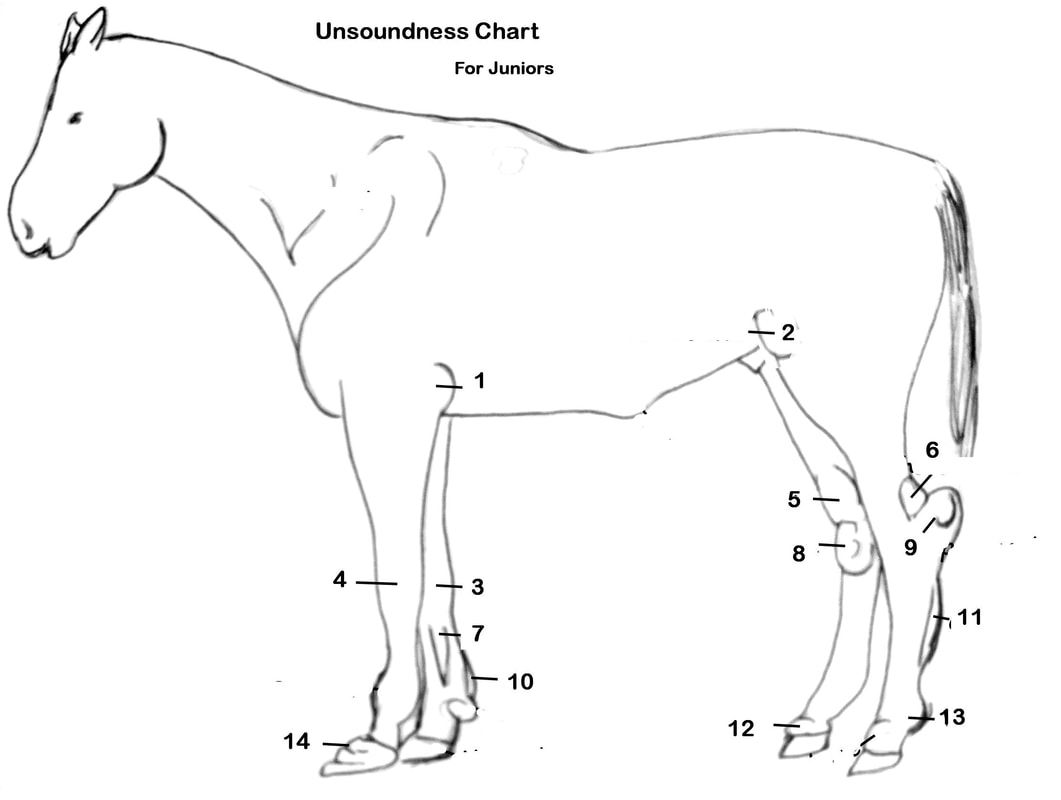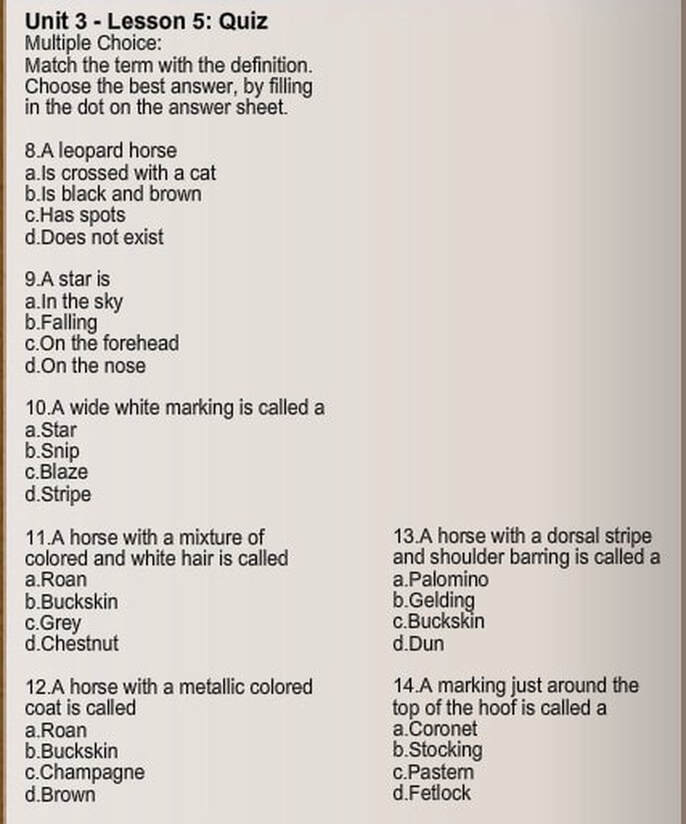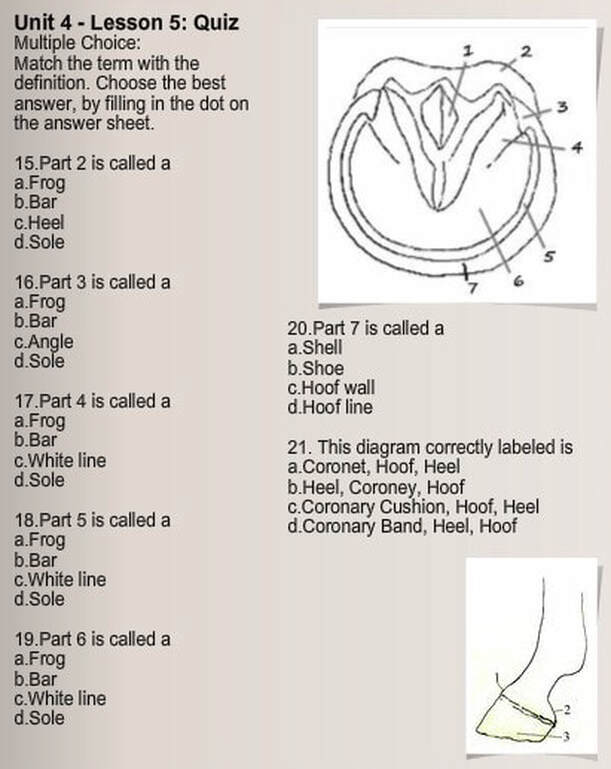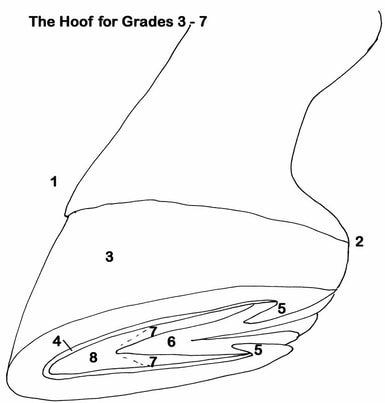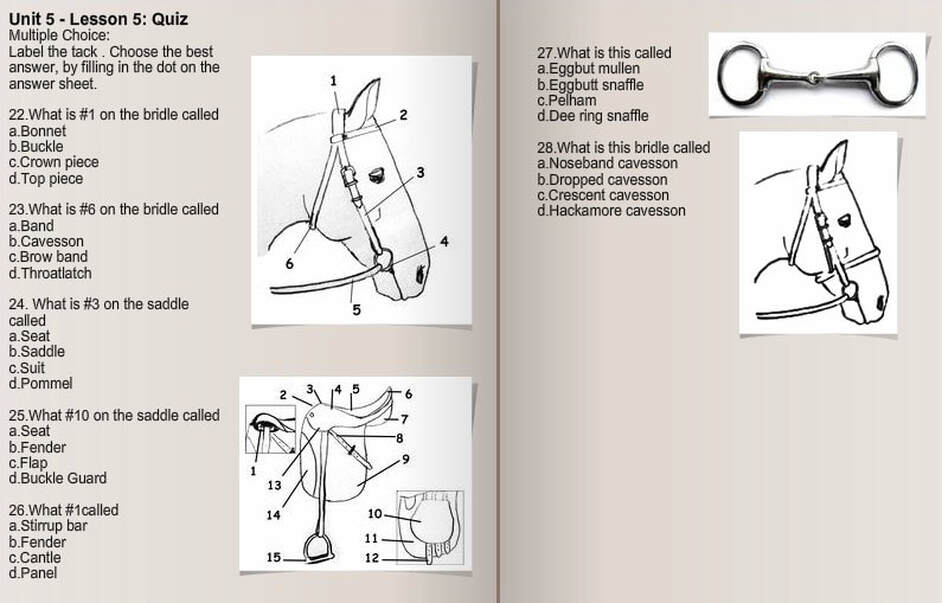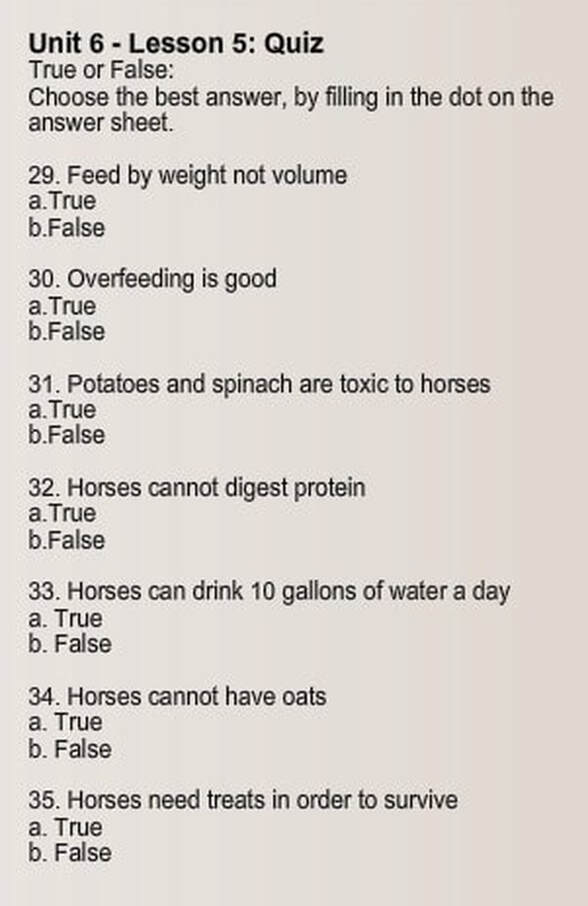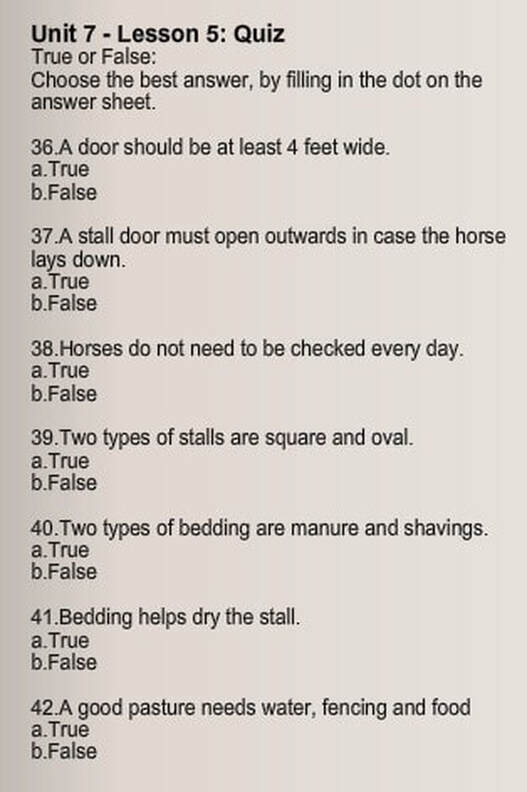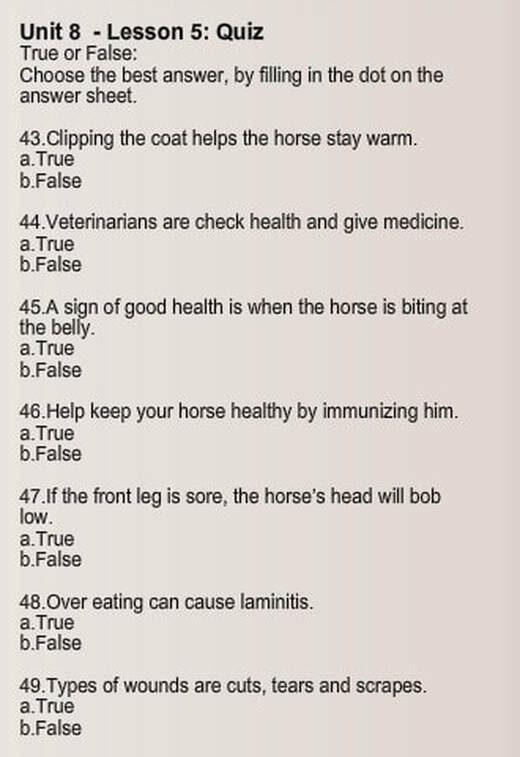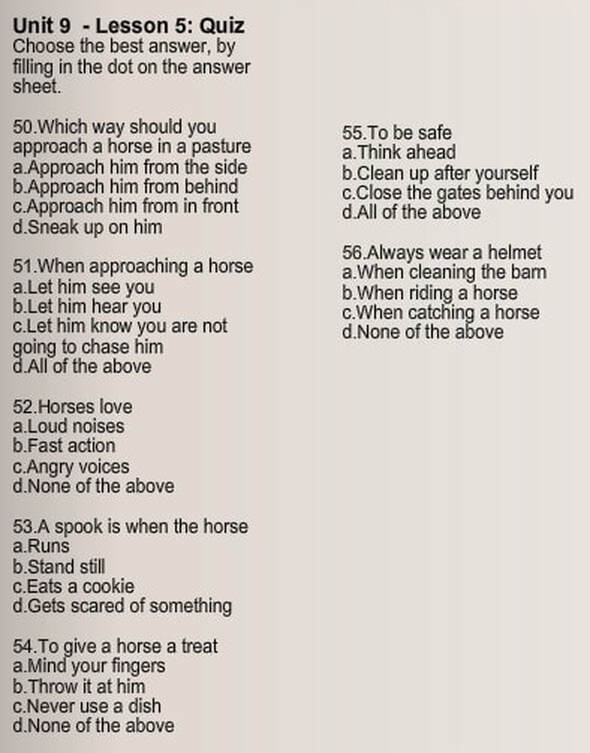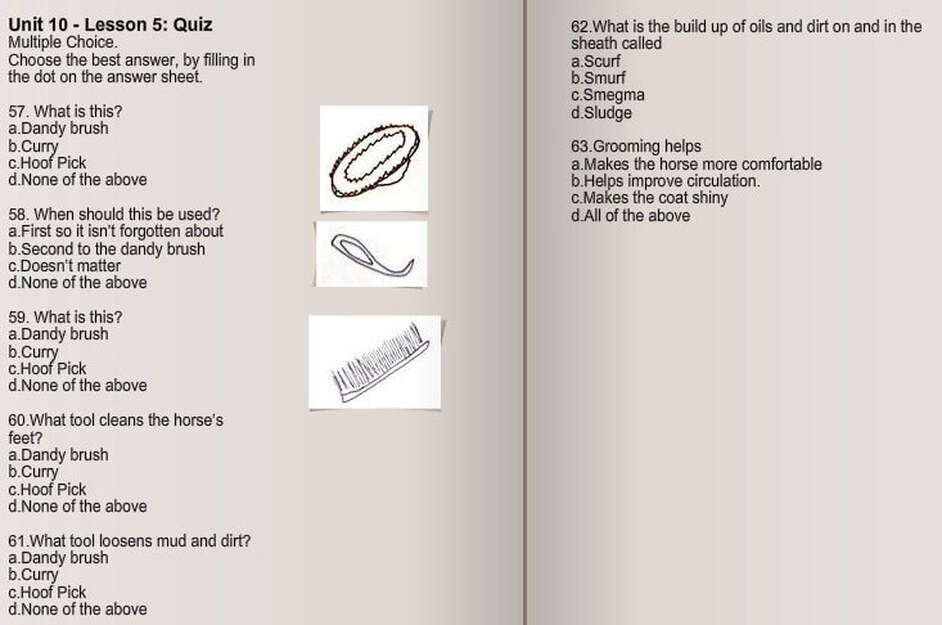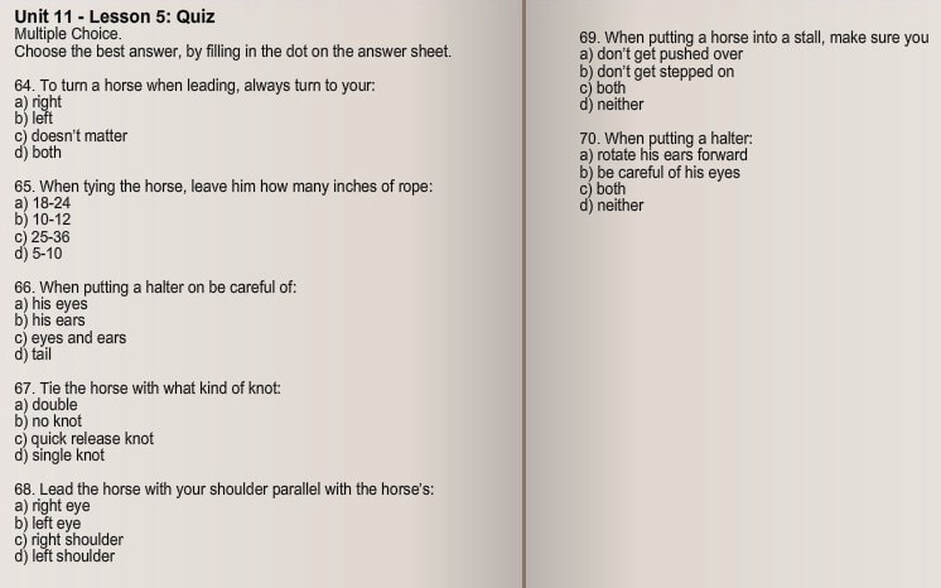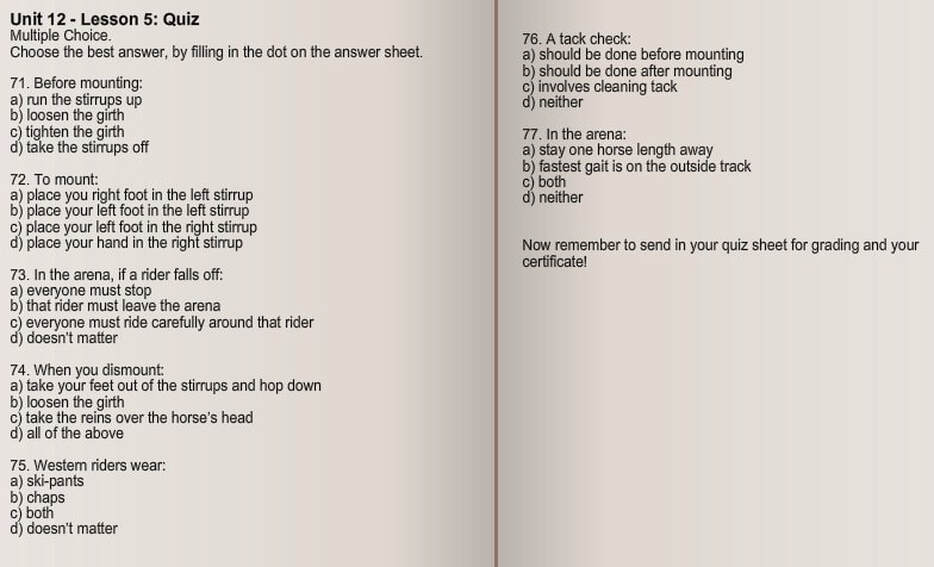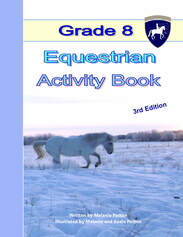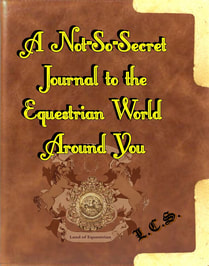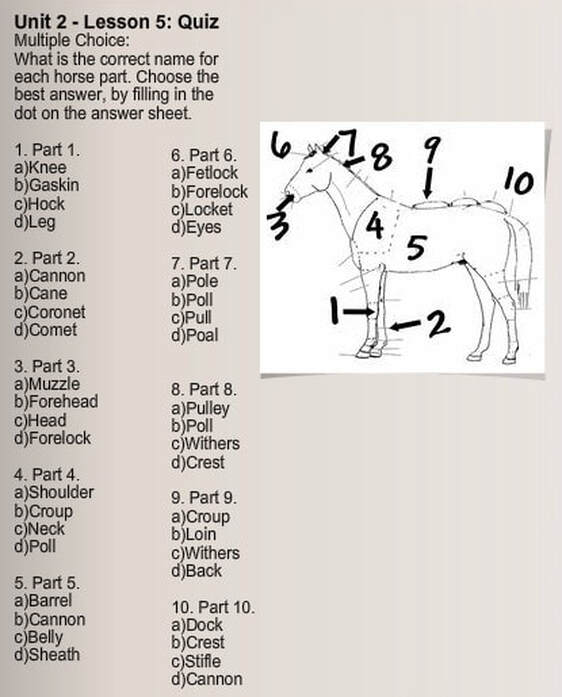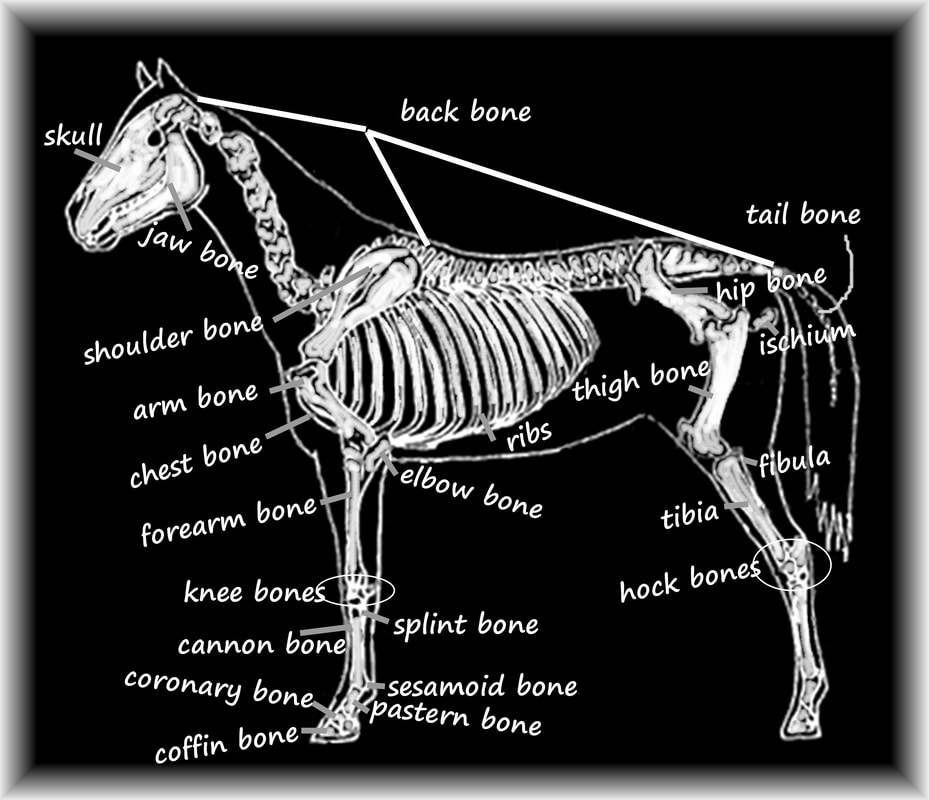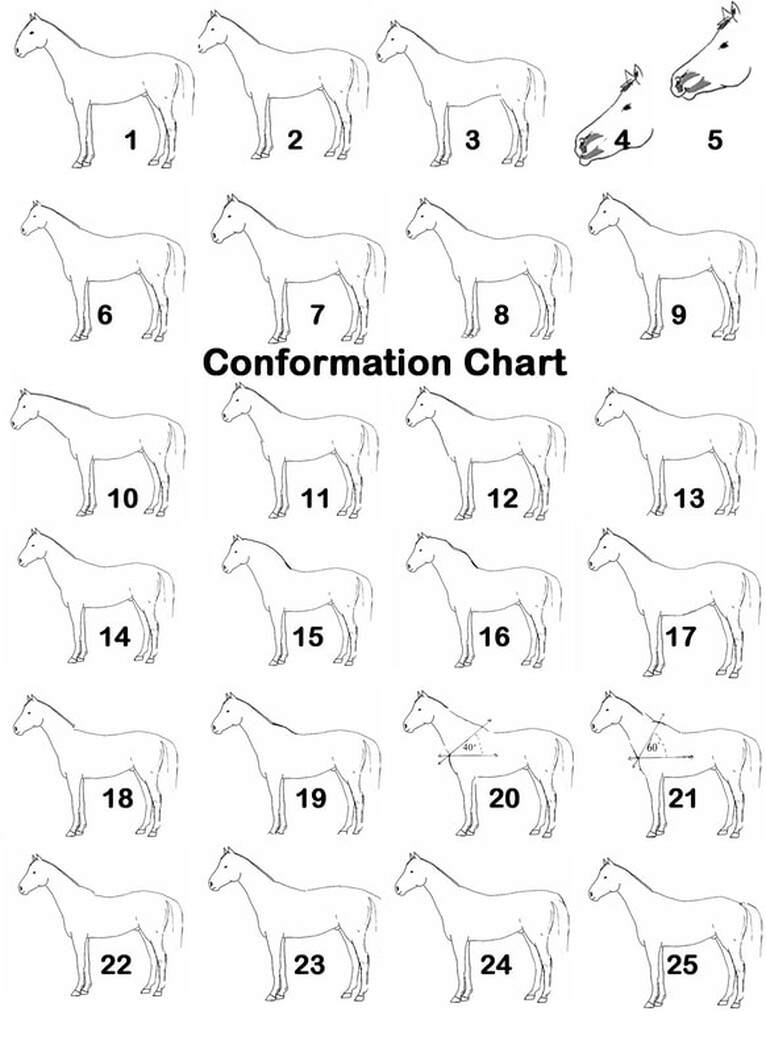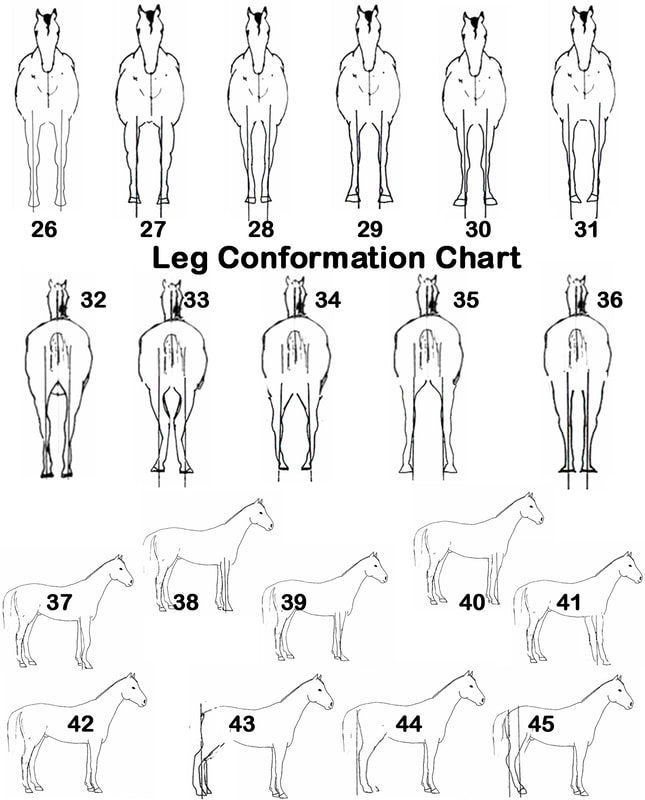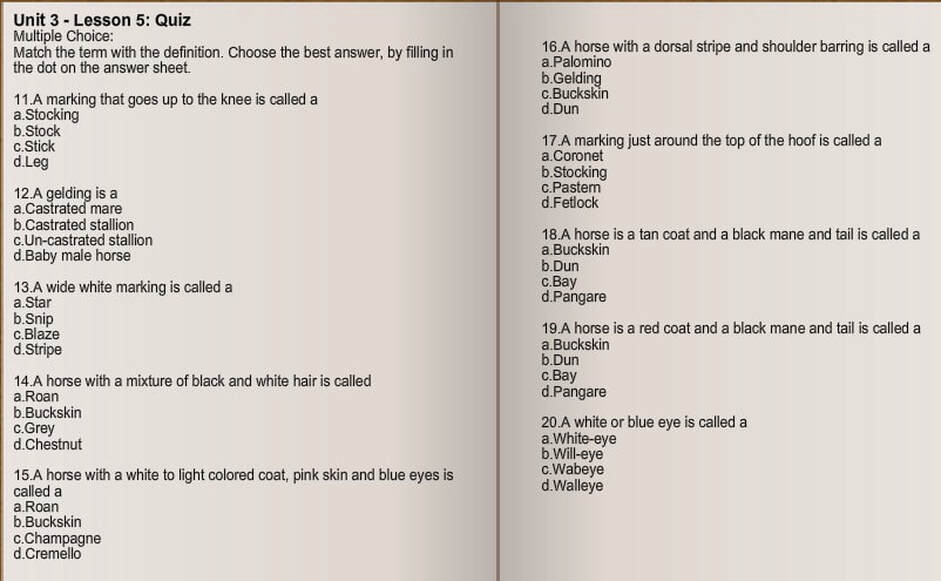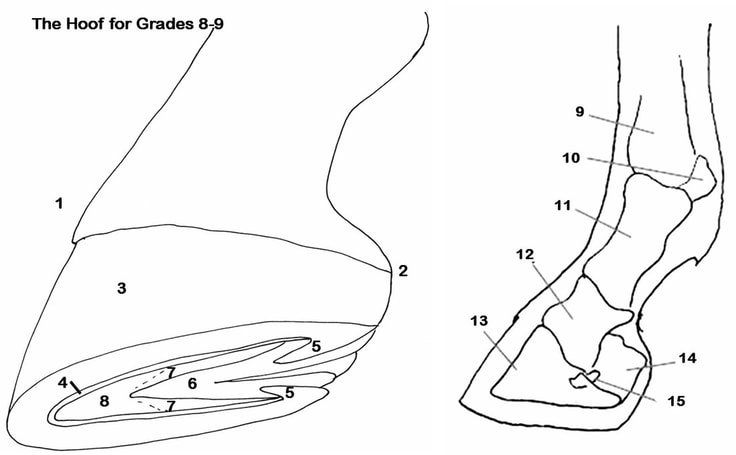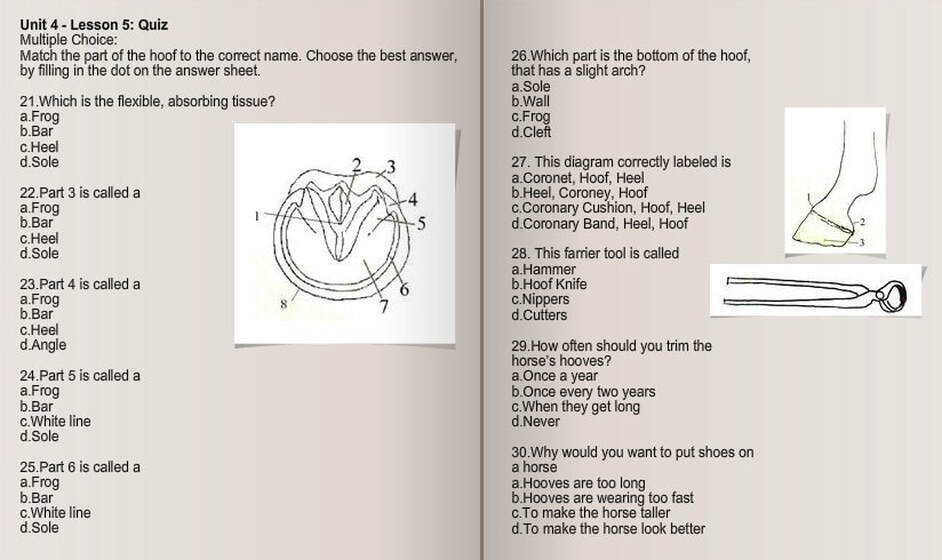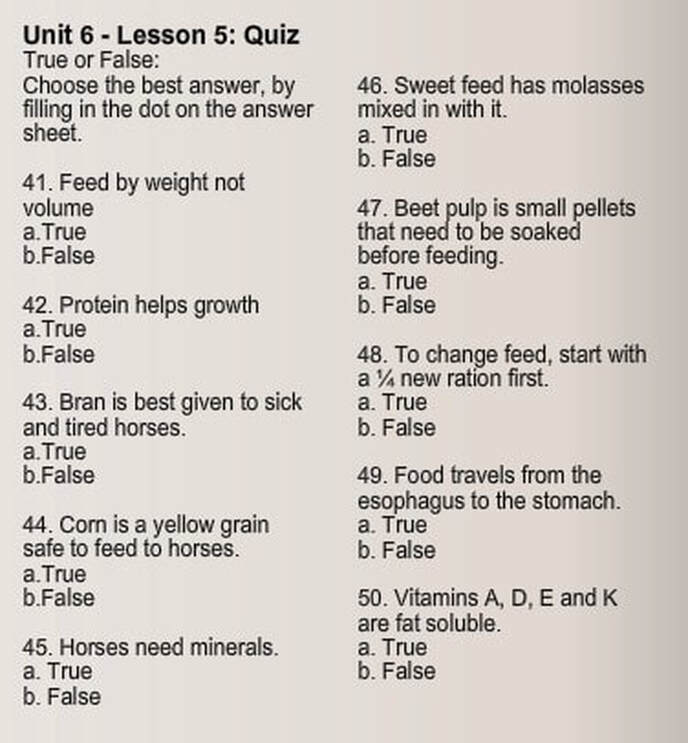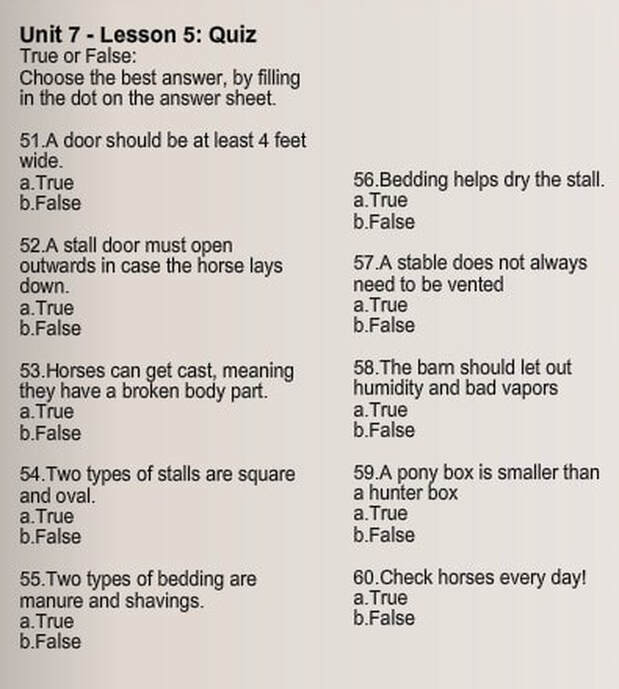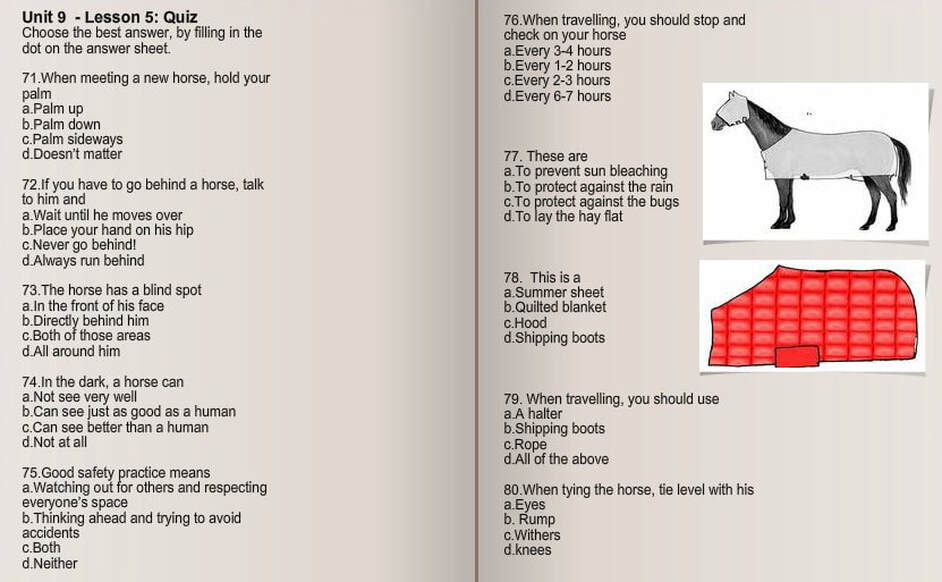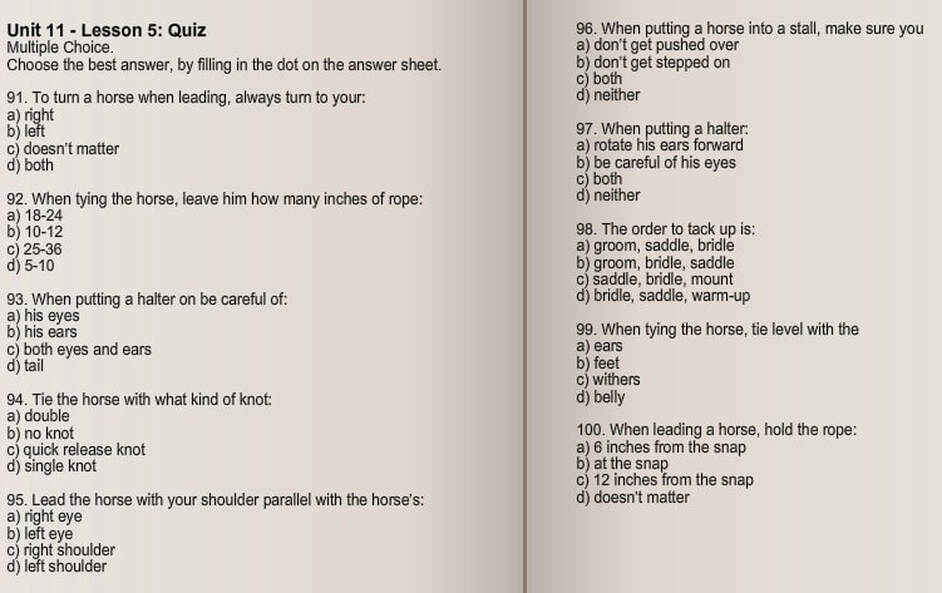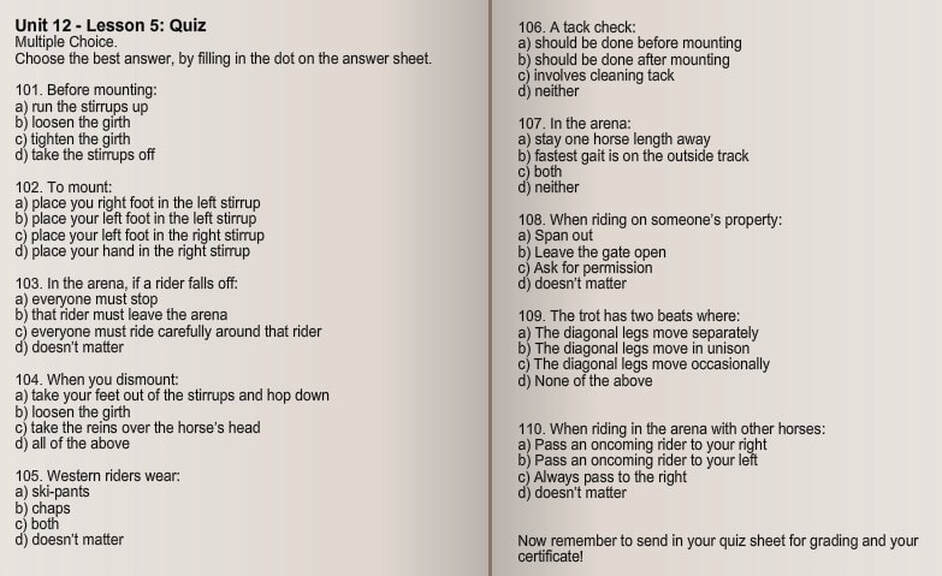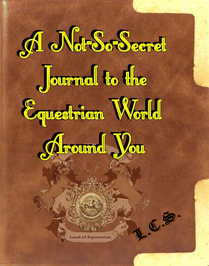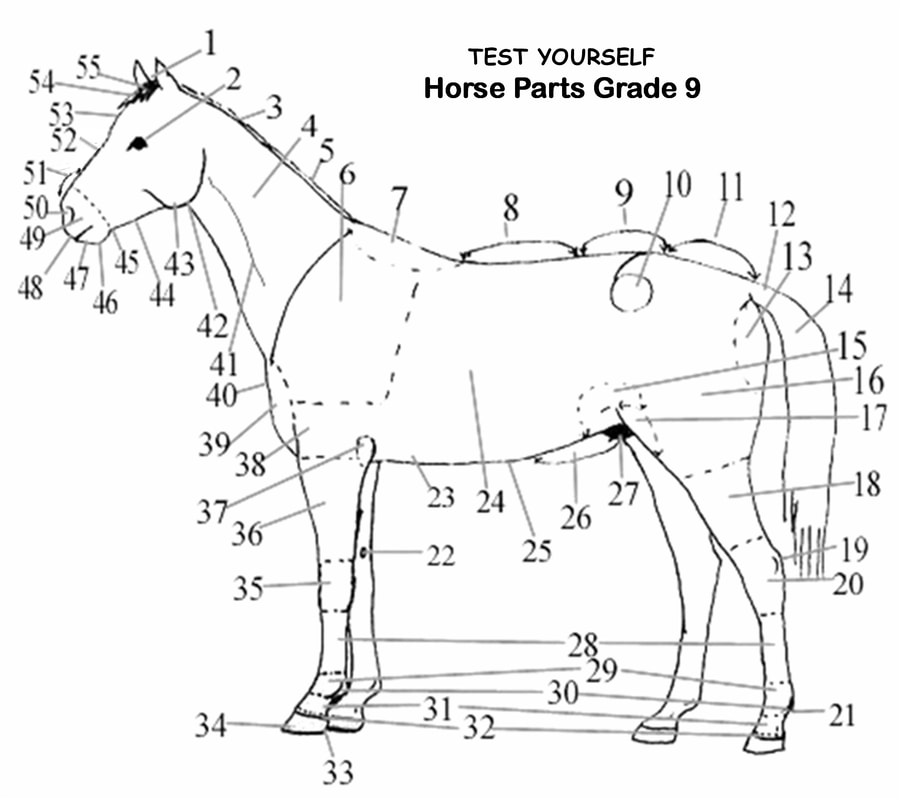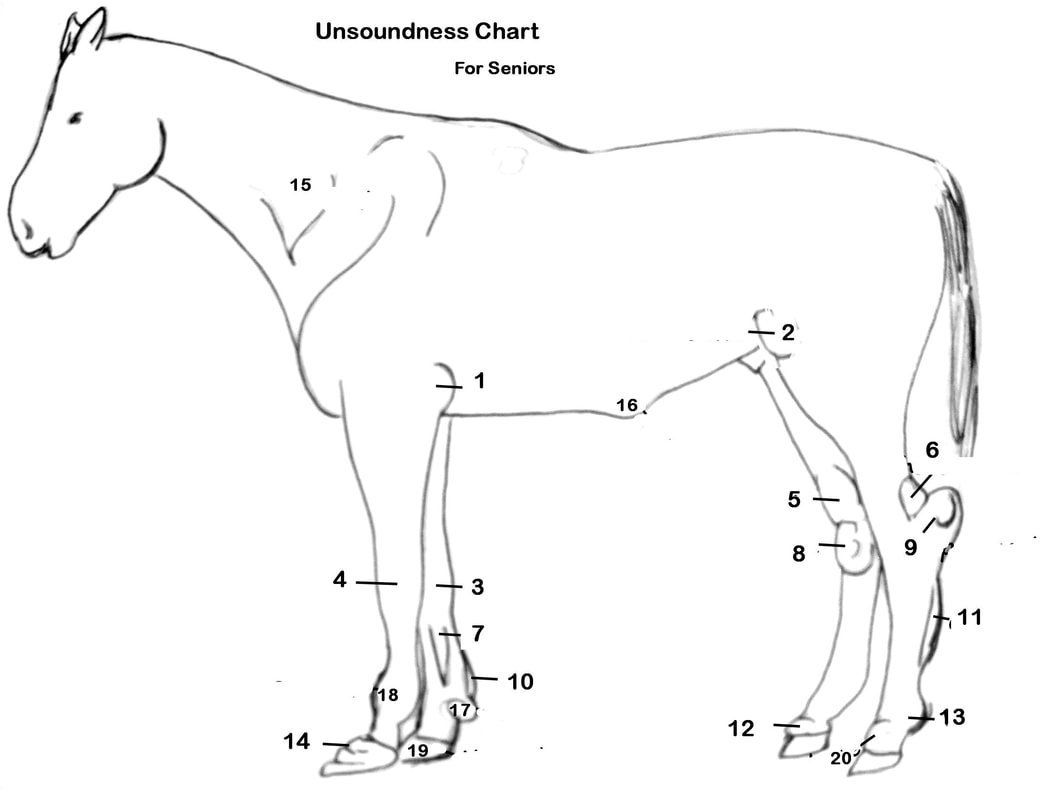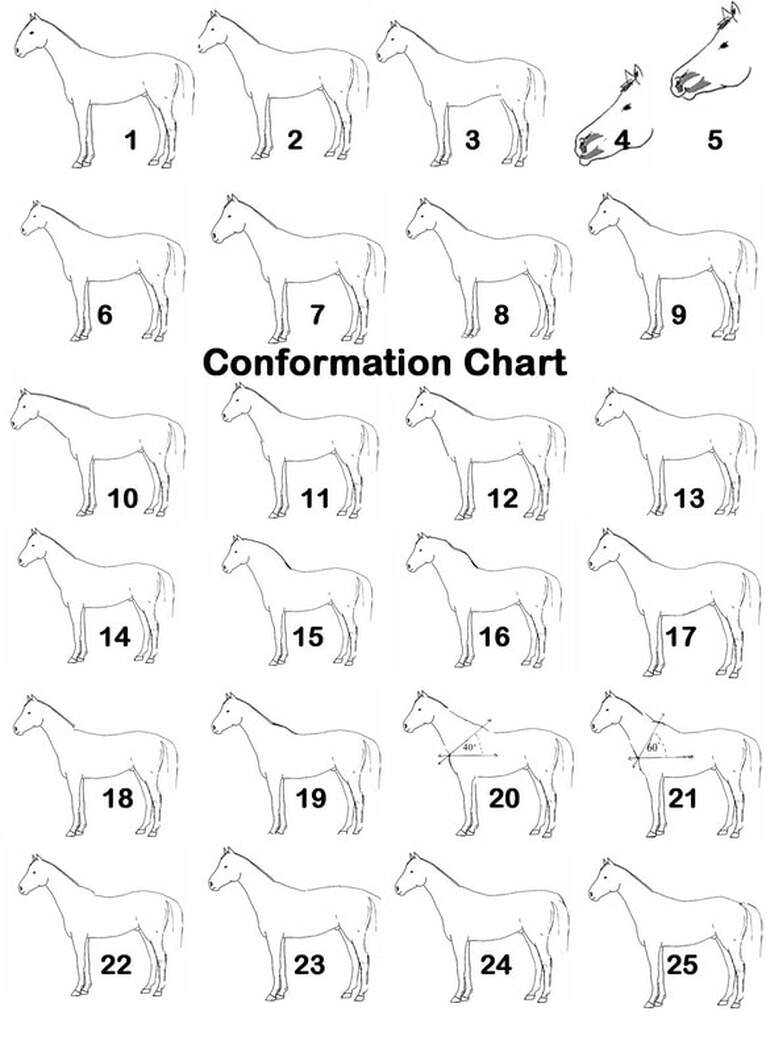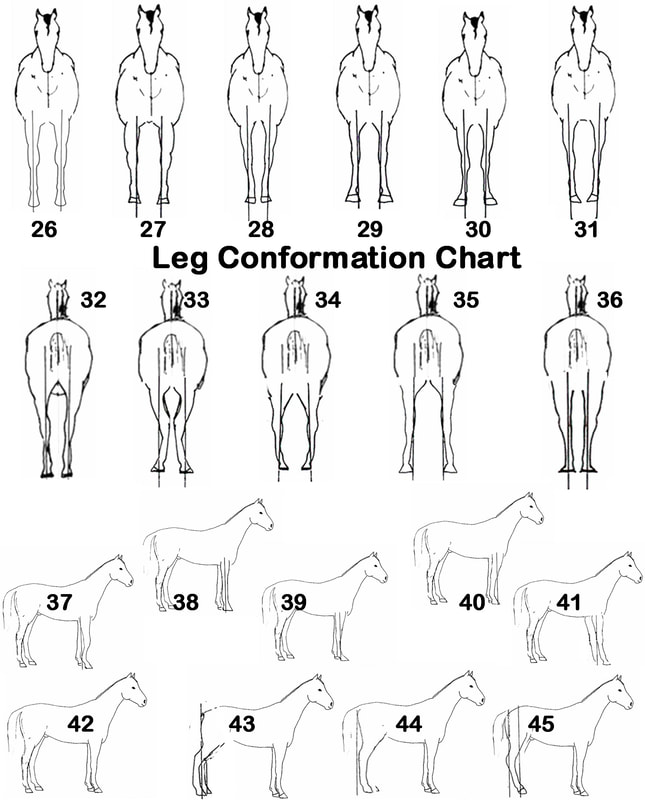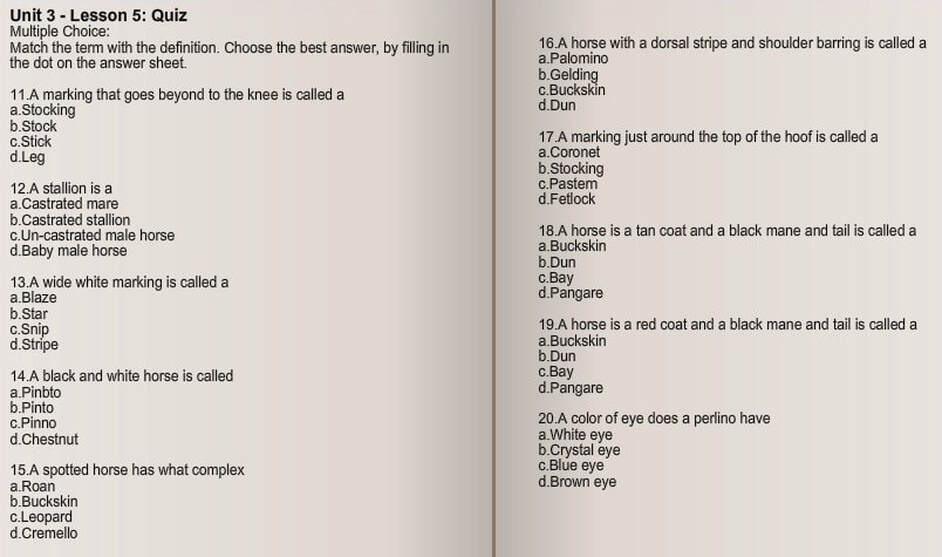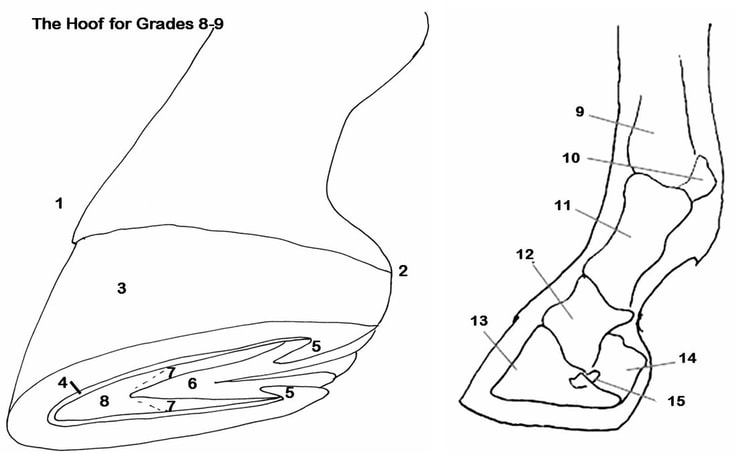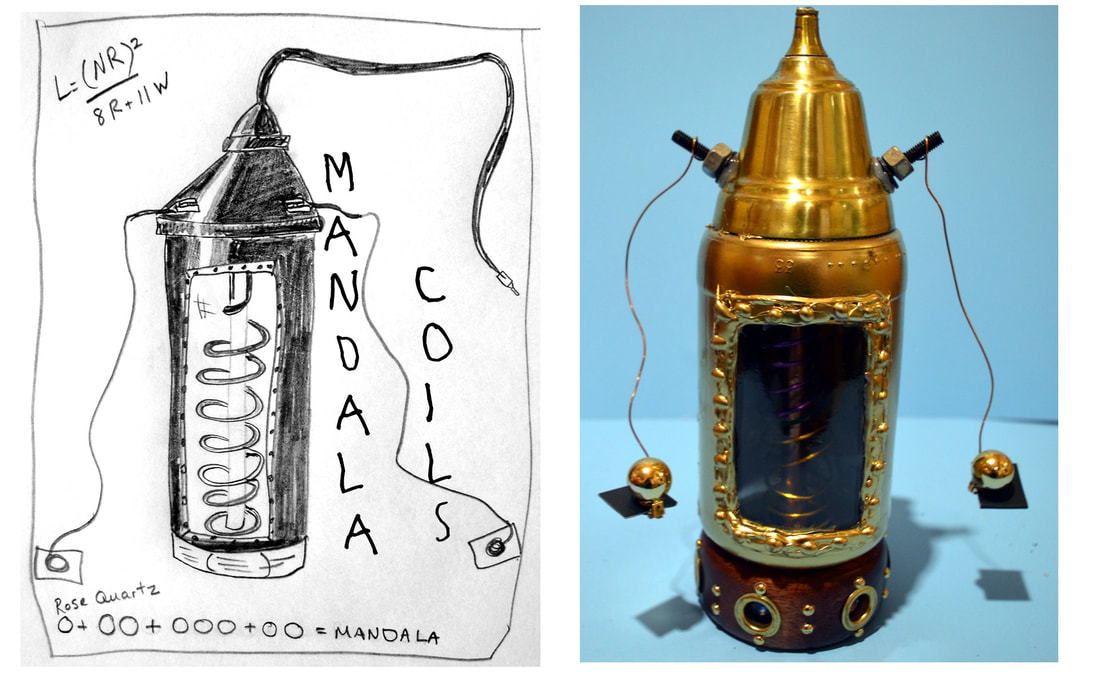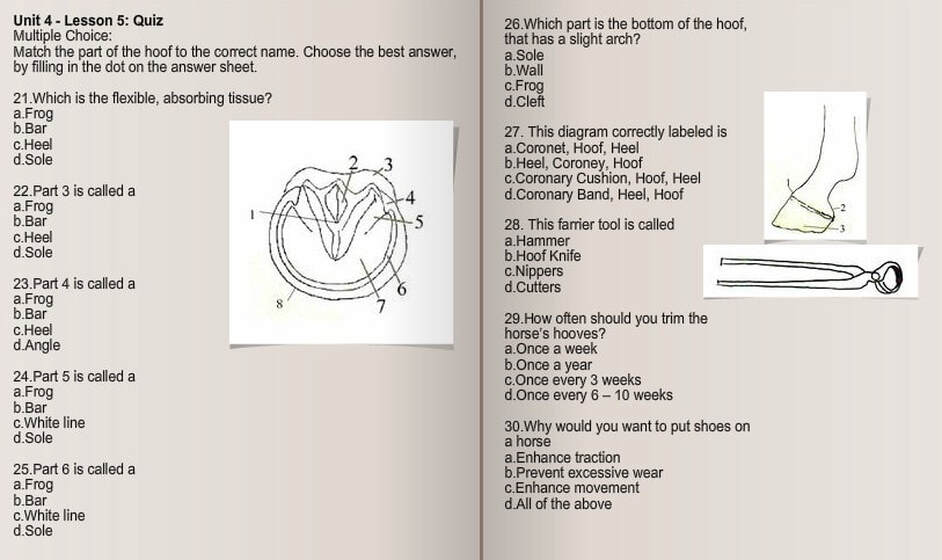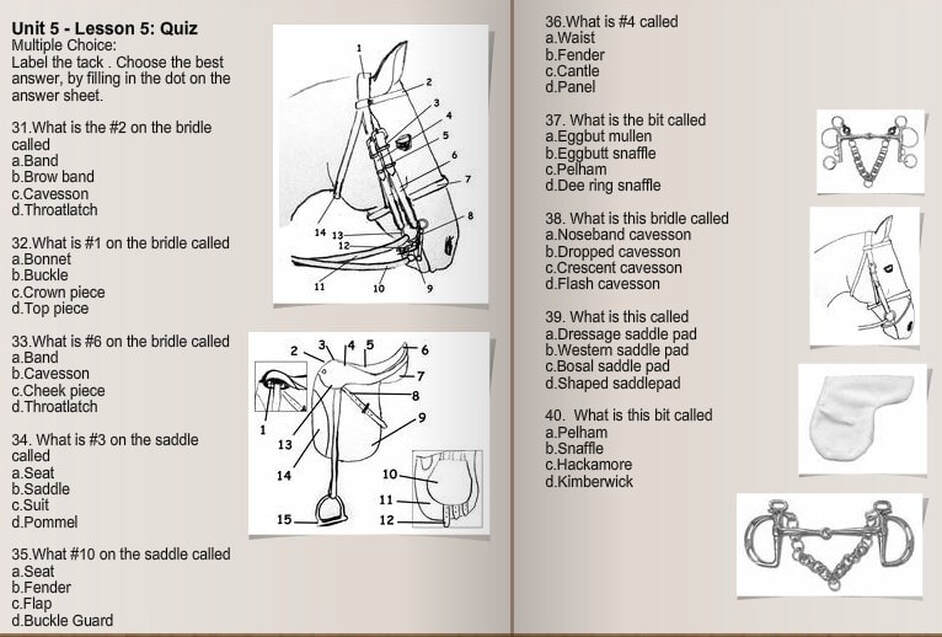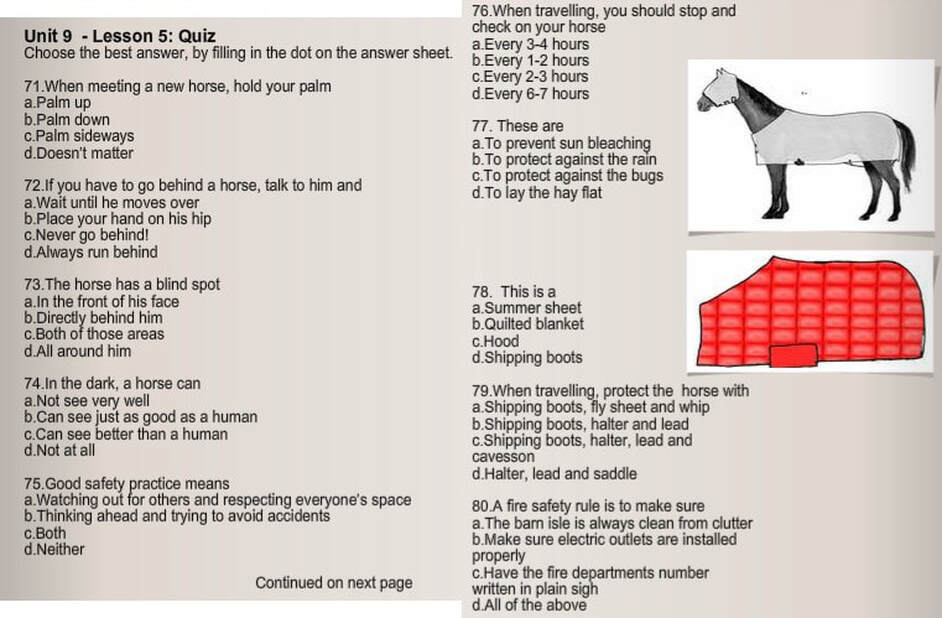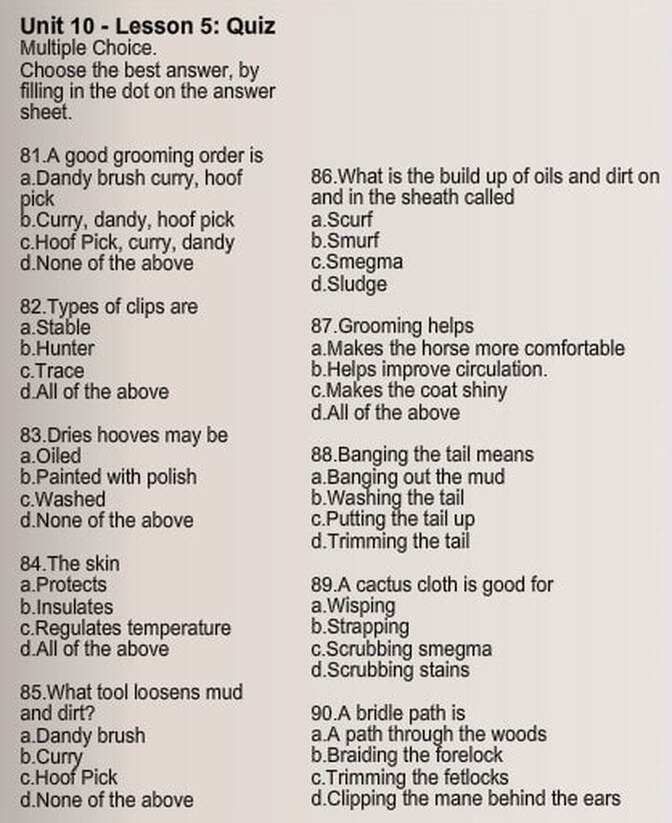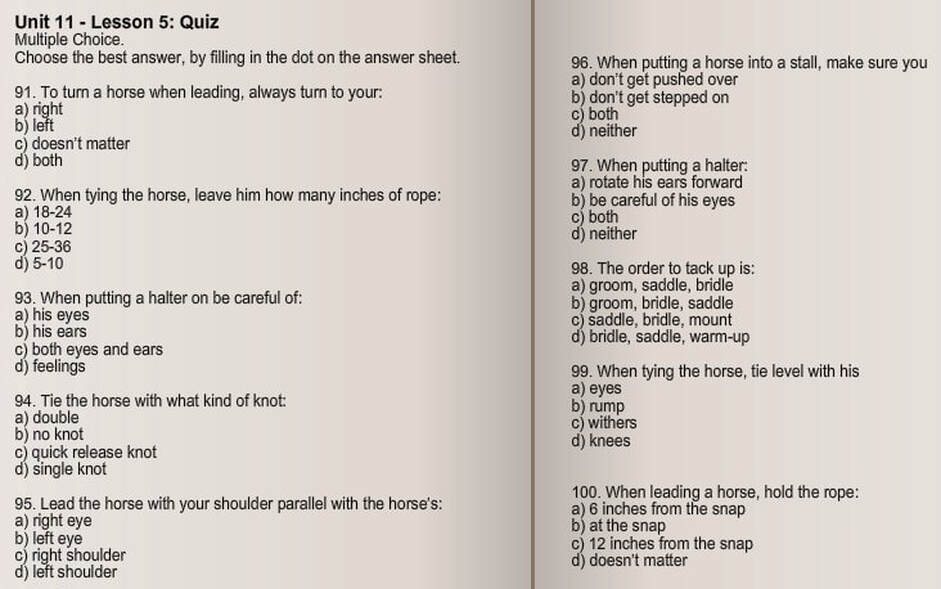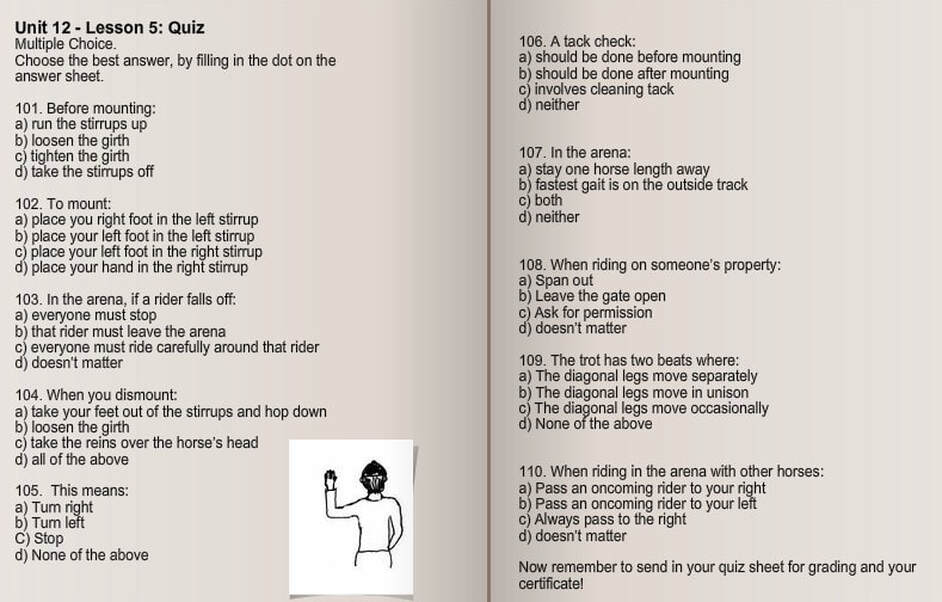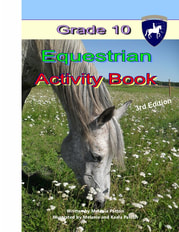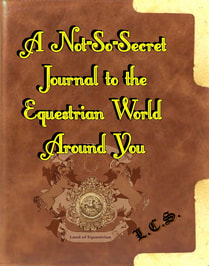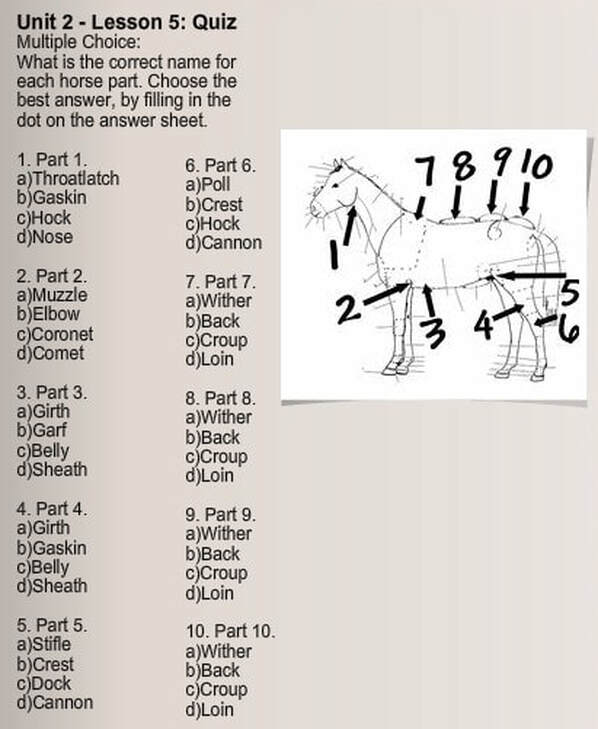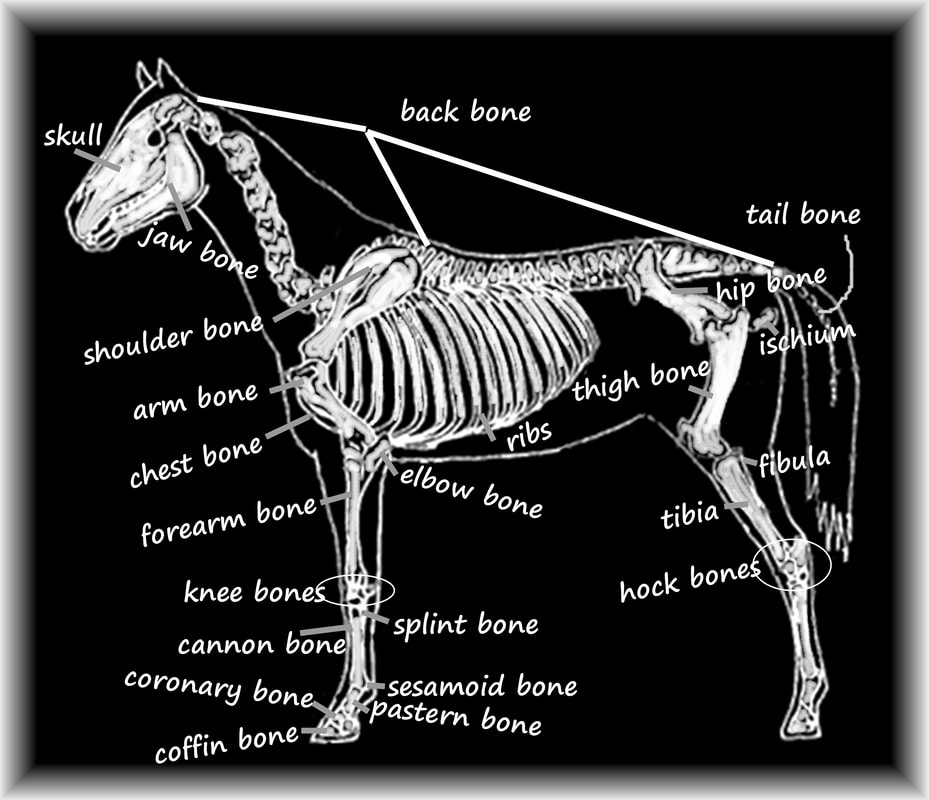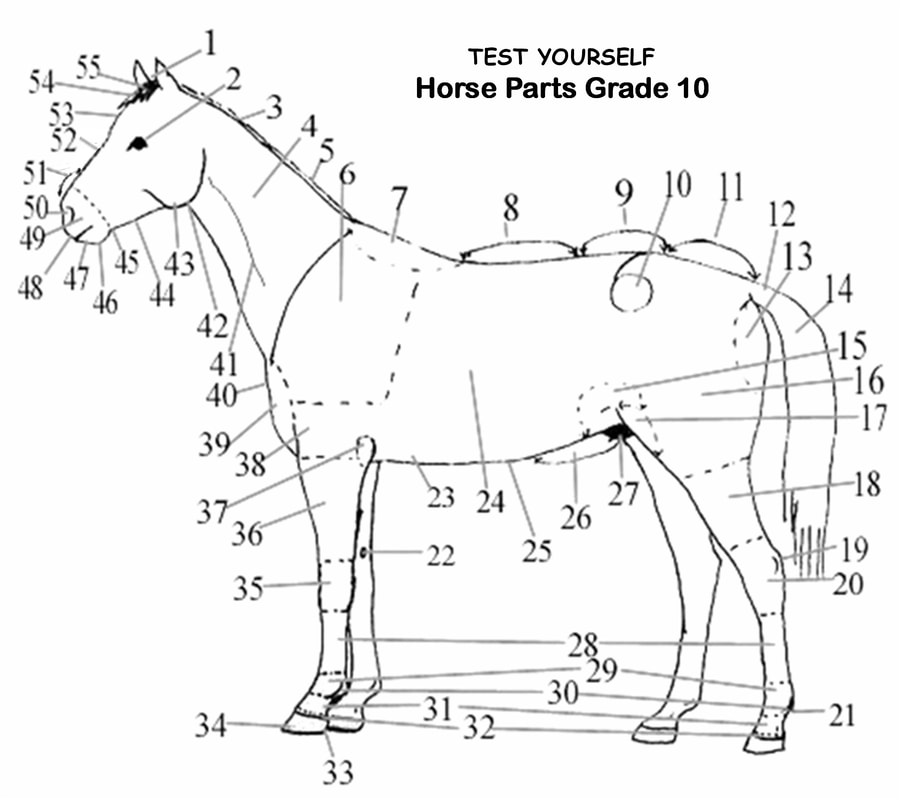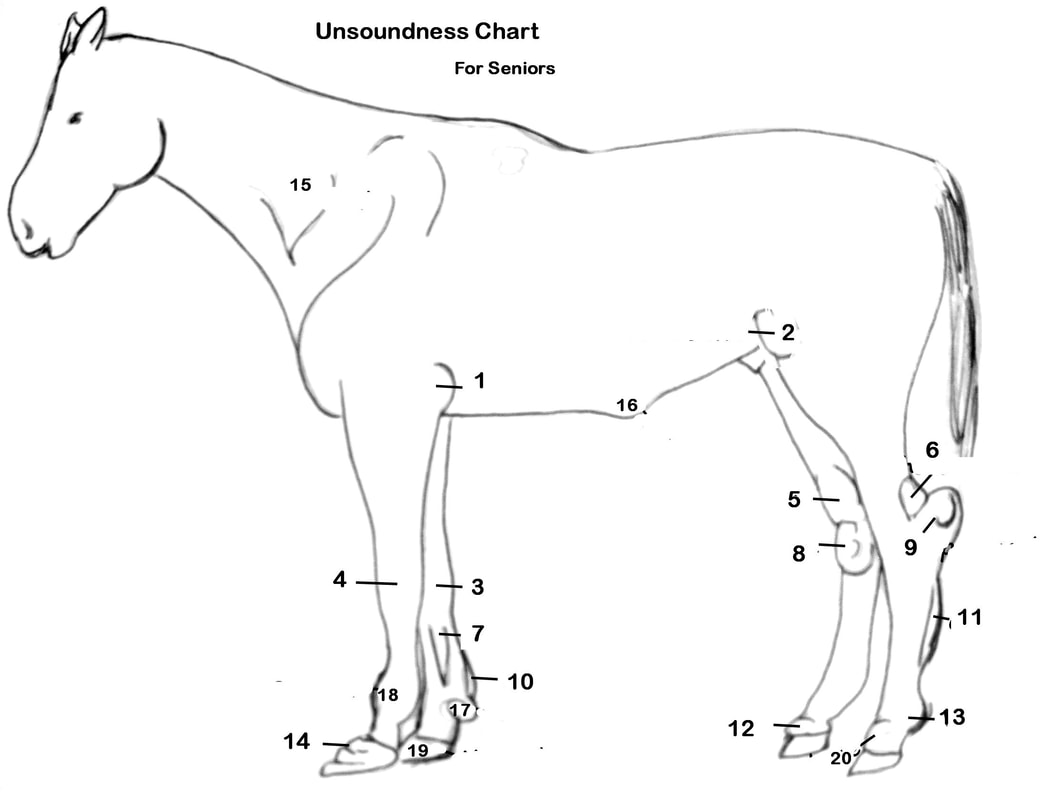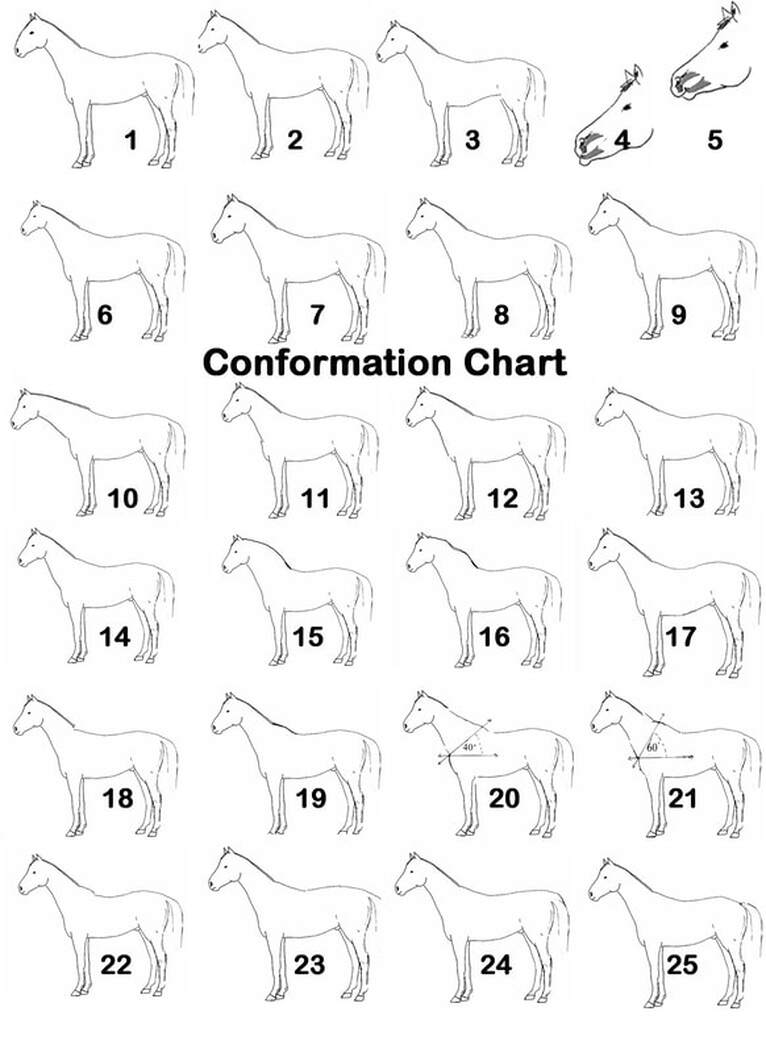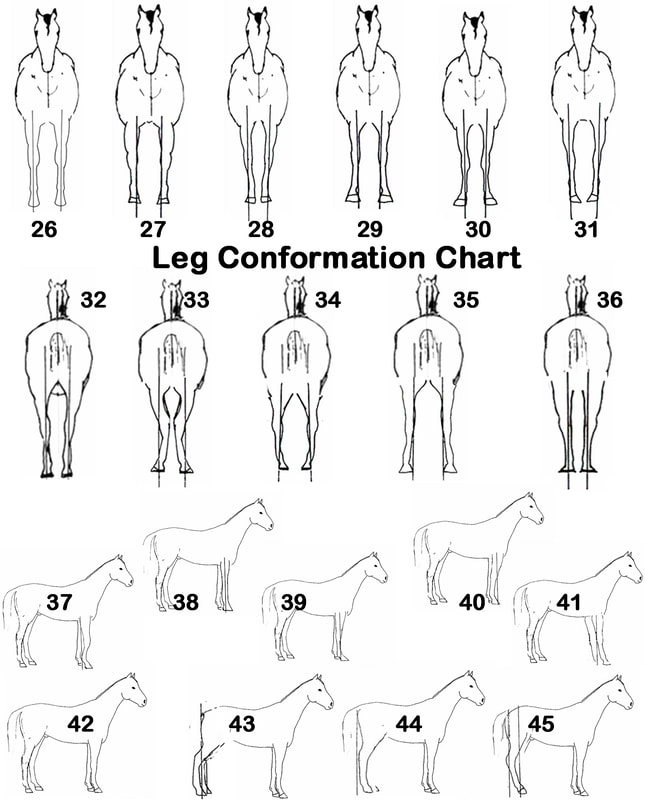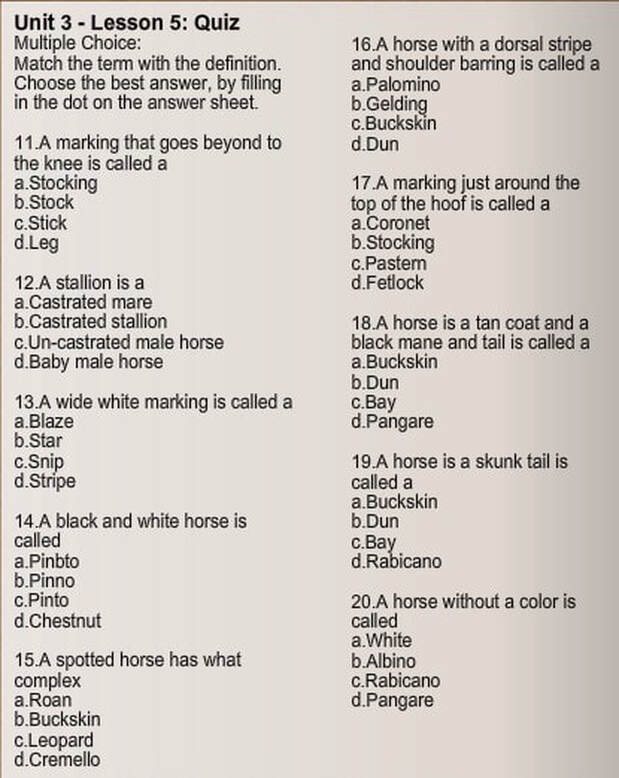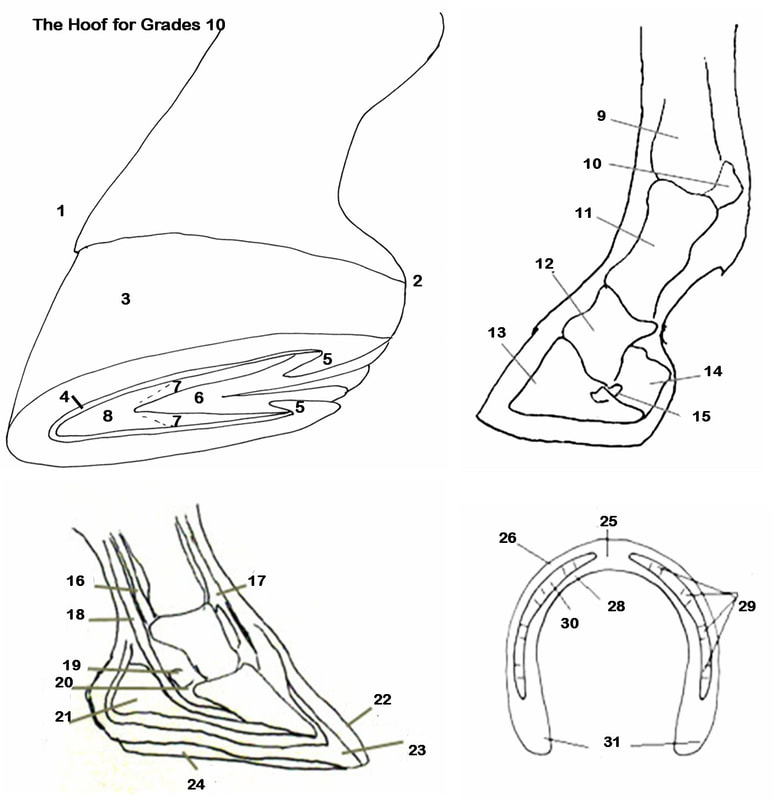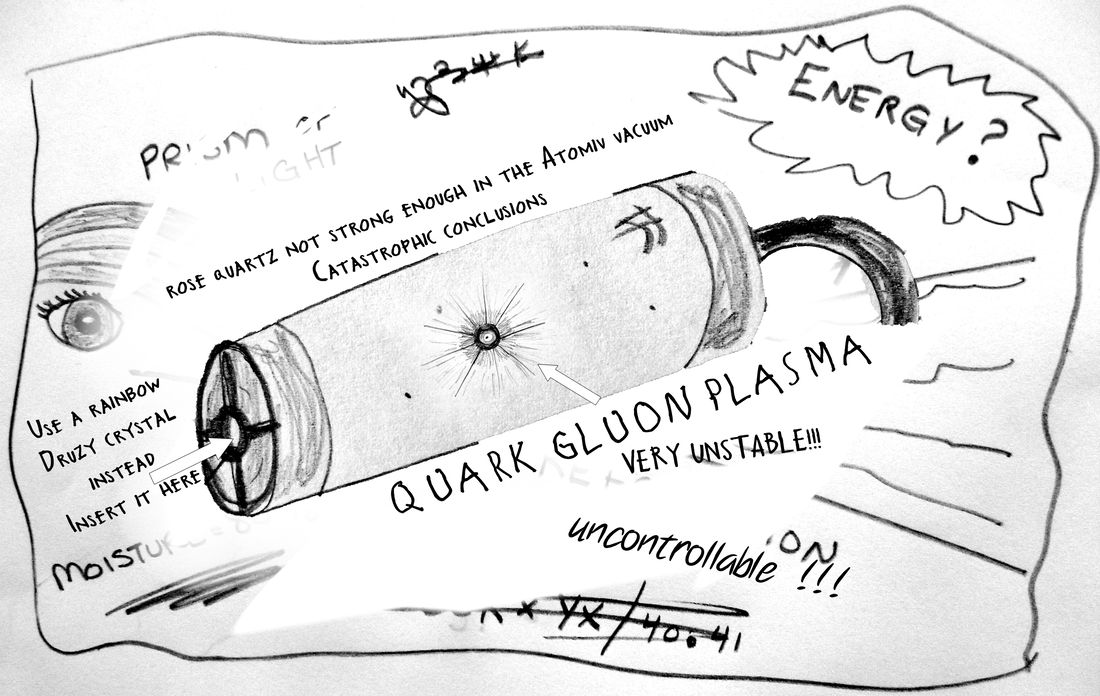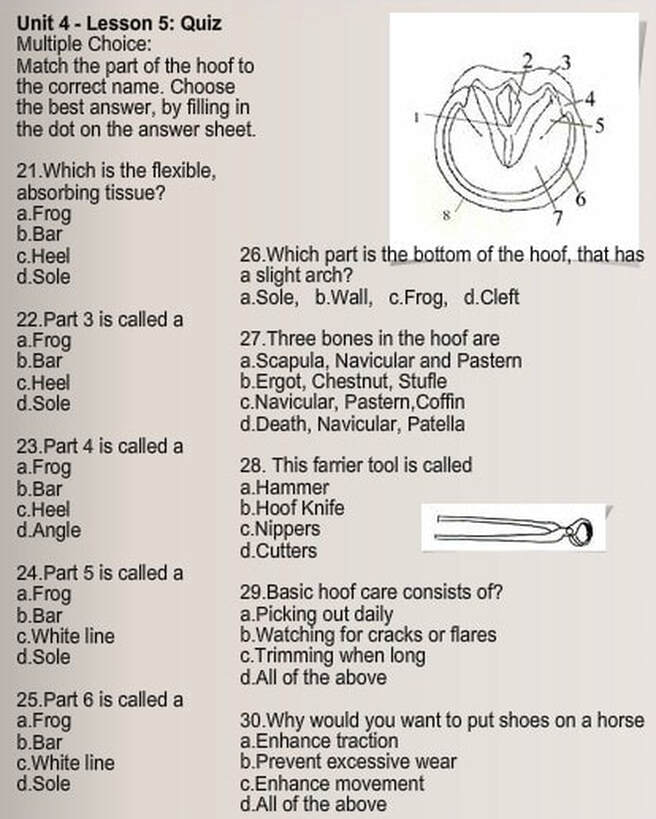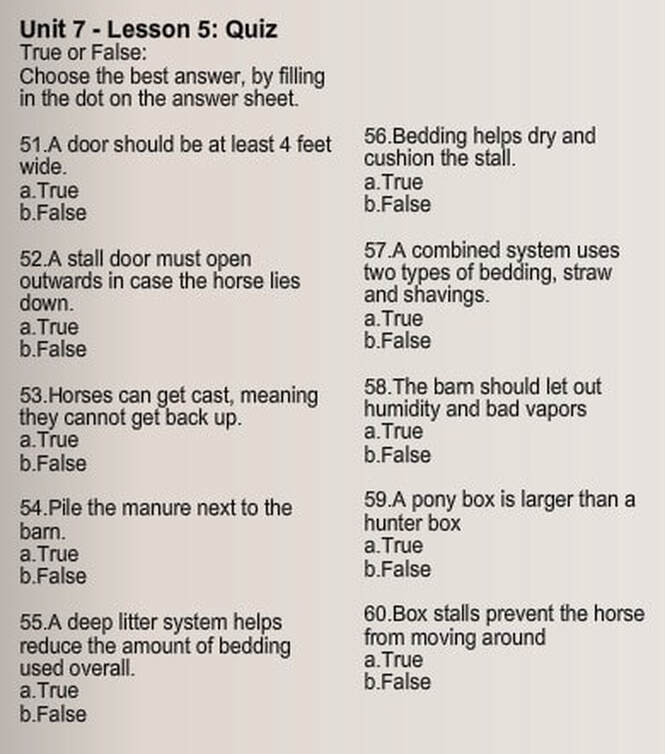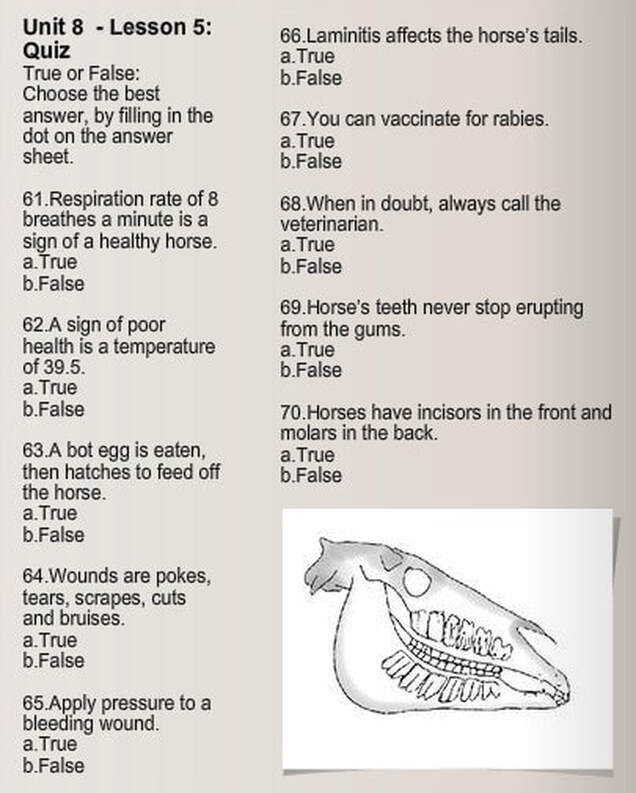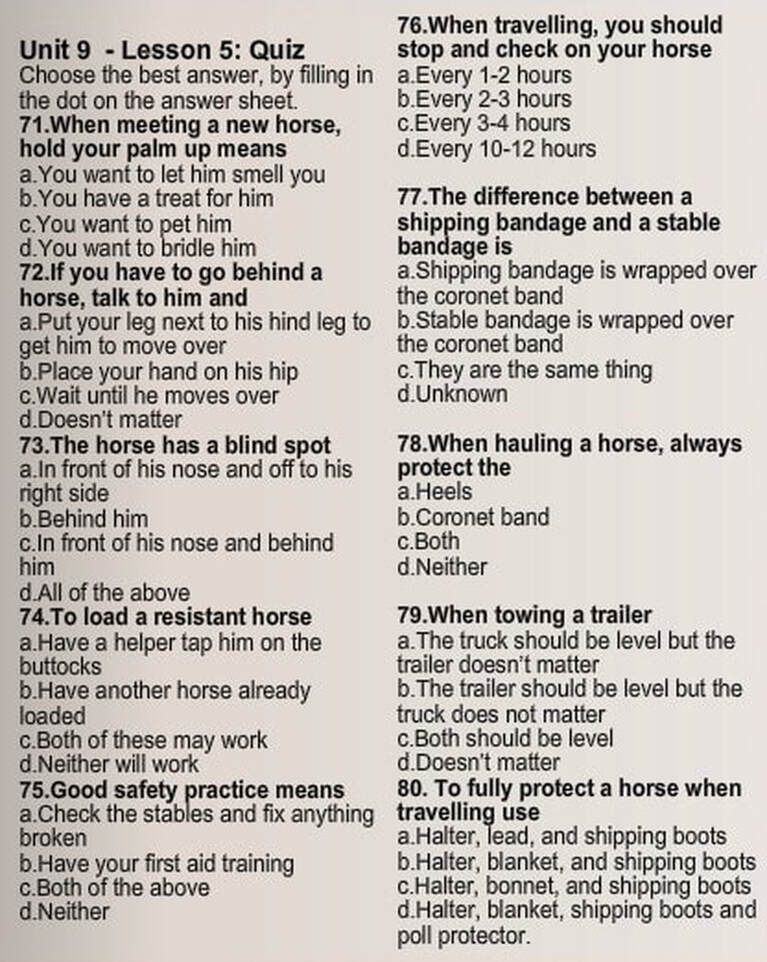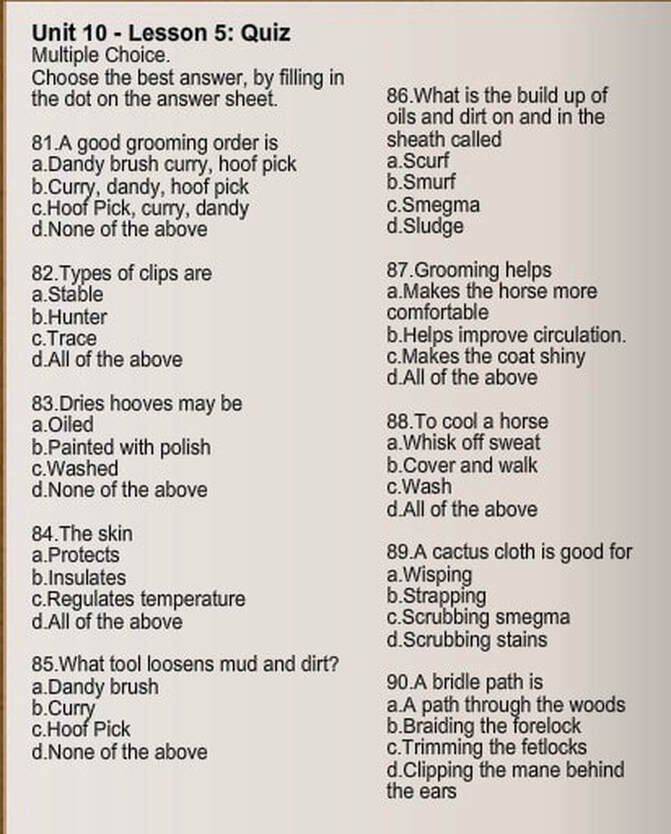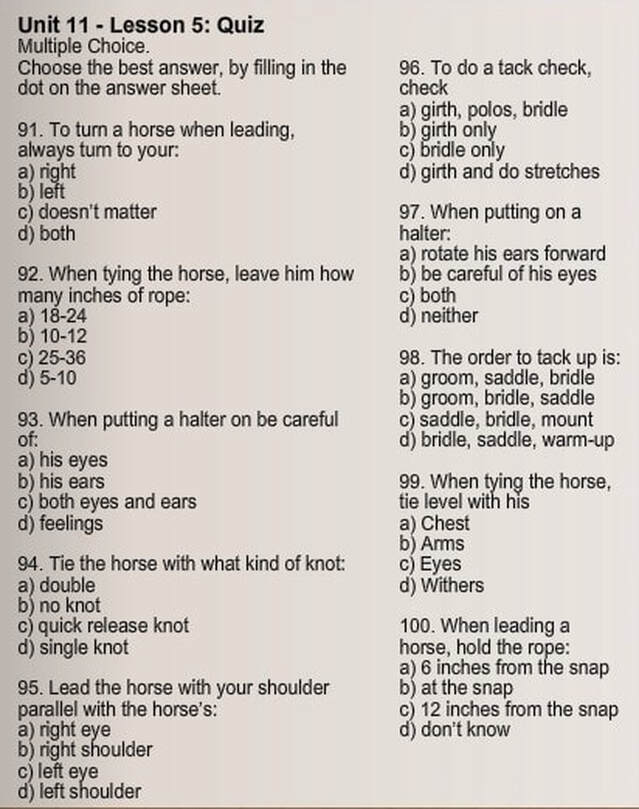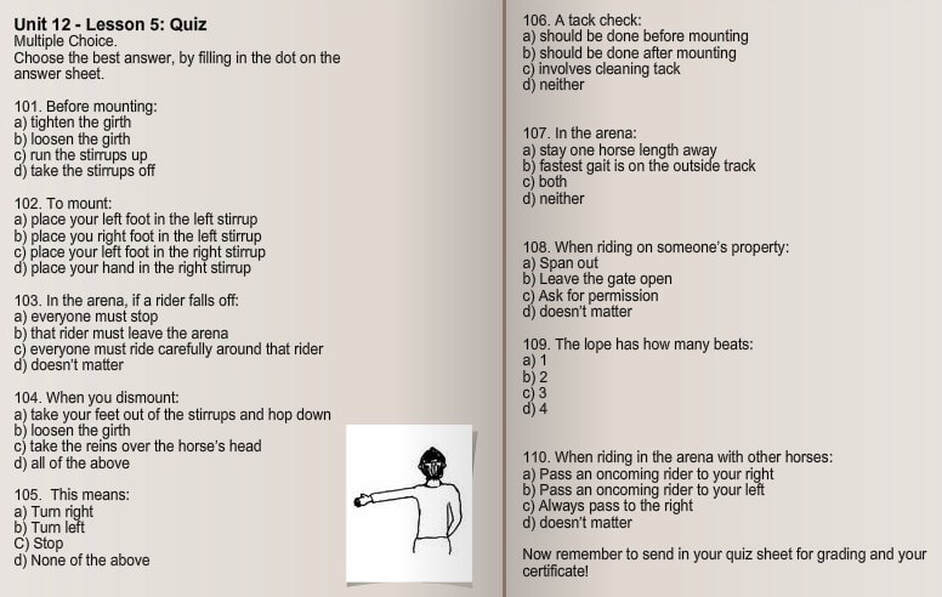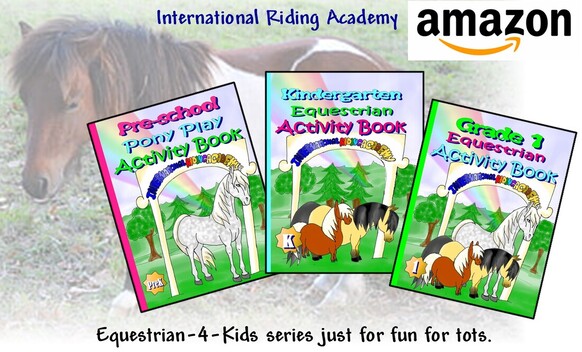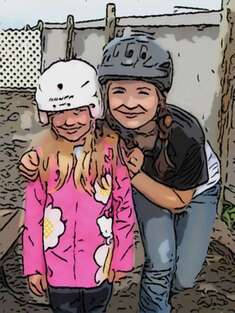Grade Pre-K - 10 Activity books - online video read-along and stories (great for clubs, camps, lessons, homeschooling)
optional - Young Rider Levels (with your riding instructor/coach), Camp Counselor (Certification)
LEARN ABOUT HORSES & CARE, PERFECT FOR RIDING CLUBS (with or without out a horse)
ORGANIZED LESSONS with HANDS-0N ACTIVITIES, COMPREHENSION QUIZZES & CHALLENGING QUESTS
All books on Amazon!
optional - Young Rider Levels (with your riding instructor/coach), Camp Counselor (Certification)
LEARN ABOUT HORSES & CARE, PERFECT FOR RIDING CLUBS (with or without out a horse)
ORGANIZED LESSONS with HANDS-0N ACTIVITIES, COMPREHENSION QUIZZES & CHALLENGING QUESTS
All books on Amazon!
EQUESTRIAN-4-KIDS STORY LINE (click to expand)
Learning about horses is anything but boring!
|
What do you get when Harry Potter meets Alice in Wonderland and travel with Gulliver in the time machine to middle earth and beyond? You get the E-Quest-Rian program!
Take a fantastical journey to the land of horses. It contains the essentials of horsemanship that is perfect for kids in Pony Club, 4H, or for kids who just want to learn about horses, how to take care of them and how to ride! What equi-tastic secrets will you discover? |
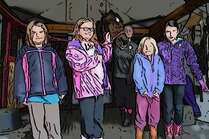
You can do this anywhere and never have to leave home or stable! It’s perfect for riding clubs and after school programs. Even the parents can have fun learning. A horse is not needed, but is beneficial of course. Children need the activity book and the corresponding textbook to find the answers. The activity books are organized into theme lessons with hands-on activities. Books (go by regular school grade) range from pre-school to grade 10. Pre-school, Kindergarten and Grade 1 are designed to be more focused on fun for the child. Once the child enters grade 2, there is a nine year story, and as the child works through each activity book, he will learn all about the International Riding Academy, horses and the fictional world called Rian (pronounced Ree-ann). There are 12 units of 5 lessons (15-60 minutes average).
|
In a book, anything happen and come to life. You will need a good imagination!
Coaches, club leaders use this as an advantage to help design group activities or study sessions. Transport everyone through the rainbow vortex into another world to discover horses in history. Engage in puzzles, games, fill in the blanks and short stories which piece together the greater story and drop hints of ... |
|
Each unit is based on a new place at the estate and learning something different about horses, such as Parts, Breeds, Colors, Health, Tack and so on. You meet all kinds of people, and have to help, all the while looking for the Professor's lost tool in which he needs it to repair his time machine. It is hidden within the pages of the activity book. Find it, write the page number for later on to decipher a secret code.
|
When you reach the end of the book, open the letter from the Butler. Go to the Lab to find the note and get into the contraption designed by the Professor. Look for the rainbow vortex. It will lead you onto a mysterious adventure in Unit 13. Find Lord Chancellor Spursnomore,
You may catch glimpses, get notes, and lost messages from him. but you may also find yourself back at the academy doors again, ready to start a new year and a new grade level. It is a nine year story line filled with journeys, learning about all kinds of horses, whether real in history or mythical.
It isn't until the child becomes a teen, or in grades 8, 9 and 10 where the child will learn just what happened to Lord Chancellor Spursnomore, how the academy came to be and the importance of learning about horses. However, grade 10 has a twist and it is up the child to save the future of the academy and go on one of the most incredible journeys yet. The problem is where is the Lord Chancellor Spursnomore?
You may catch glimpses, get notes, and lost messages from him. but you may also find yourself back at the academy doors again, ready to start a new year and a new grade level. It is a nine year story line filled with journeys, learning about all kinds of horses, whether real in history or mythical.
It isn't until the child becomes a teen, or in grades 8, 9 and 10 where the child will learn just what happened to Lord Chancellor Spursnomore, how the academy came to be and the importance of learning about horses. However, grade 10 has a twist and it is up the child to save the future of the academy and go on one of the most incredible journeys yet. The problem is where is the Lord Chancellor Spursnomore?
What to do? (CLICK TO EXPAND)
|
Finish all of the units in the activity book
Try the quiz, and mark it with the answers on the website. Bonus: keep track of how many horse related books were read that year and how many hours were spent with horses, including pony camp! The certificate is in the back of the activity book. Optional for those with horses Young Rider program - there is a report card filled with things to do for each level, of which the leader/coach can mark off. |
Pony Camp (CLICK TO EXPAND)
|
It's so much fun, parents will be asking to join!
This manual contains all the information you need to successfully set up a children camp/session/program with horses. International Pony Camp Manual for coaches, instructors and camp leaders to help guide and give ideas for teaching, learning and having fun with a traditional camp environment and adding a new age twist! Manual includes Equestrian-4-Kids program, Young Rider program, Camp Counselor training, Pony Camp thematic ideas, and the Amaranthine Story, which is a 10 year cycle story that accompanies the thematic camps and gives the children more inspiration and incentive to keep learning about horses and horse care. Click to order in the US / Canada / UK / Germany |
Help kids discover a deep and meaningly connection with horses!
Bonus Material (CLICK TO EXPAND)
HERE ARE SOME GAMES TO PRINT AND CUT OUT
HORZEE (Yahtzee) download the card and print off enough to play with friends. As for the dice, you will need to make some. You may be able to get some wooden or plastic blocks from a craft or dollar, or draw over some old ones with your parents permission, of course!
HORSE BINGO download and print off the playing cards as well as the pieces to call out. You will have to do some cutting!
CRAZY HORSES download and print off the deck of cards. You will have to do some cutting. The game is similar to Crazy Eights and Uno. Object of the game is to get out of cards first. Deal 5 cards each. Follow the background color until it is changed, and every horse does something different.
Appaloosa's spots make you dizzy, you have to turn around, reverse game play.
Arabians come in many colors - play changes to person's choice of color.
Clydesdales are meant to carry a heavy load, next player has to pick up a card, unless they have a veto of the matching color scheme playing.
Lipizzaners are the epitome of horses, consider them a wild card - pick a color.
Morgans are such great, versatile horse. Here they have the power to veto any bad card played prior to one's turn, such as pick up, or miss a turn, or switch direction.
Paint horses are known for their color. Here they have the ability to go on any color without changing the color scheme being played. For example, if it's 'yellow' and you have a paint with a blue background, you may play the paint!
Palominos are such a pretty, golden color, here they can go on yellow, regardless of the color of the background. For example, if the scheme is yellow, and you have a blue Palomino card, you may change it! But it changes the scheme to the color of your card (here it would have been blue).
Przewalski horses are a mysterious breed that developed through evolution, hardly changing today. In the game, they are a mystery. Suggestions?
Quarter horses are commonly used for roping. If you play it, you must rope and take the card before it!
Shetland ponies are mischievous causing the next player to miss a turn, unless they have a veto that matches the color scheme playing.
Shires are the biggest work horses of all. Next player needs to pick up 2 cards, unless of course, they have a veto of the matching color scheme playing.
Thoroughbreds are very fast race horses. If you play one, you can go again! Or two or three!
Tennessee Walkers have a substantial gait. Here they will stomp out the next two players, as they will miss they turns.
But not done yet, if a player gets down to their very last card, they must say, "Last horse!" or they will get an extra card if someone notices.
Also, if a player cannot place a card on the pile, he or she must draw from the deck one card. If they still cannot go, then say, "Hold my horses."
I warn you this game gets a little crazy!
TRICK OR TREAT download and print off the game board, cards, and the horse bones. You will need to cut the bone pictures up into about 5 pieces. The goal of the game is to collect all the bones to make a complete horse skeleton. This game is perfect for learning the bones, as well as celebrating Halloween, as you will notice the earn treat cards!
You earn bones either by landing on the square with the bone, or drawing a free bone card.
Squares:
Bone = you get a bone
Candy Corn = you get a treat (great way to earn little treats after going trick or treating! Don't overdo it though.
Spider Web = lose a turn
Bat Wings = advance to the next square the wing touches
Jack-o-lantern = draw a card and follow it's words
Eyes = keep your eyes open!
Ghost = Boo! you got so scared you had to go back one square, and follow that square's picture
Werewolf = steals one of your bones!
For those who like trivia games, Barnboozle is for you! Instructions included in download. It is a lot of printing, cutting and organizing, but it is so much fun! Here is the game board and pieces. For now you will have to come up with your own trivia questions. The trivia questions will be here soon, but are under construction!
YOUNG RIDER LEVELS (CLICK TO EXPAND)
MOUNTED PORTION (perfect for lessons) - These levels are special based for children who are not yet ready for the International Rider Levels. They are perfect for coaches to set up a riding program based on versatility and proper horsemanship. Everything is automatically sent to young members.
Upon completion, a certificate will be mailed. (Must be a current member). You can earn a credit for riding all the tests scoring 55+%.
YOUNG RIDER A, B, C & D:
~ for children who are not yet ready for the International Rider Levels
~ perfect for coaches setting up a riding program based on versatility and proper horsemanship
~ upon completion, a certificate will be mailed once (Must be a current member) Score must be 55+%
~ may ride the test again later to upgrade their scores or for fun and learning
~ incentive ribbons are mailed per horse and rider combination (Horses must be registered with the academy)
~ each horse and rider combination may only ride a test once per evaluation, but may ride in two consecutive levels
_______________
Young Rider A is designed as an introduction to horses and the children learn to practice safety and how to sit the seat of the saddle balanced and safely. Children may be lead for the video test, however the child must hold on to the reins and show an effort for turning, stopping and urging the horse forward. To make the test a little harder, the child may opt to ride with no lead-line or no handler or coach in the arena. The test is walk only, with small circles, rail, centerline and midline paths. Click to watch a sample video test.
_______________
Young Rider B is designed to be the first test where the child is to rider without the lead-line. A handler or coach may be present in the arena, but must not lead the horse. To make it harder the child may opt to ride without a handler in the arena. The test is walk only, with small circle, rail, centerline and diagonal paths where the rider is to use long reins. Click to watch a sample video test.
_______________
Young Rider C is designed to be the first test where the child is to trot without a handler, but the handler may be present in the arena. To make it harder the child may opt to ride without a handler in the arena. The test consists of walk and trot, but is only on the rail and offers one diagonal at a where with long reins. Click to watch a sample video test.
_______________
Young Rider D is similar to the Level 0 Dressage tests, however it is slightly easier with smaller circle, can be ridden in a smaller arena and does not require the Free Walk. A handler or coach may be present in the arena. To make it harder the child may opt to ride without a handler in the arena. Also, the child may choose to ride in a regulation size arena to make the test harder.
Upon completion, a certificate will be mailed. (Must be a current member). You can earn a credit for riding all the tests scoring 55+%.
YOUNG RIDER A, B, C & D:
~ for children who are not yet ready for the International Rider Levels
~ perfect for coaches setting up a riding program based on versatility and proper horsemanship
~ upon completion, a certificate will be mailed once (Must be a current member) Score must be 55+%
~ may ride the test again later to upgrade their scores or for fun and learning
~ incentive ribbons are mailed per horse and rider combination (Horses must be registered with the academy)
~ each horse and rider combination may only ride a test once per evaluation, but may ride in two consecutive levels
_______________
Young Rider A is designed as an introduction to horses and the children learn to practice safety and how to sit the seat of the saddle balanced and safely. Children may be lead for the video test, however the child must hold on to the reins and show an effort for turning, stopping and urging the horse forward. To make the test a little harder, the child may opt to ride with no lead-line or no handler or coach in the arena. The test is walk only, with small circles, rail, centerline and midline paths. Click to watch a sample video test.
_______________
Young Rider B is designed to be the first test where the child is to rider without the lead-line. A handler or coach may be present in the arena, but must not lead the horse. To make it harder the child may opt to ride without a handler in the arena. The test is walk only, with small circle, rail, centerline and diagonal paths where the rider is to use long reins. Click to watch a sample video test.
_______________
Young Rider C is designed to be the first test where the child is to trot without a handler, but the handler may be present in the arena. To make it harder the child may opt to ride without a handler in the arena. The test consists of walk and trot, but is only on the rail and offers one diagonal at a where with long reins. Click to watch a sample video test.
_______________
Young Rider D is similar to the Level 0 Dressage tests, however it is slightly easier with smaller circle, can be ridden in a smaller arena and does not require the Free Walk. A handler or coach may be present in the arena. To make it harder the child may opt to ride without a handler in the arena. Also, the child may choose to ride in a regulation size arena to make the test harder.
Ready to start? Let's begin!
Find your grade and follow along.
Read along in your activity book and listen for the sound of the horse whinny to turn the page.
PICK YOUR GRADE TO EXPAND THE BOX BELOW
Find your grade and follow along.
Read along in your activity book and listen for the sound of the horse whinny to turn the page.
PICK YOUR GRADE TO EXPAND THE BOX BELOW
GRADE 2 (CLICK TO EXPAND)
Before we begin, make sure you have your activity book and the reference book which can be ordered from Amazon.
Click on the book(s) to follow the link.
Click on the book(s) to follow the link.
Ready to start? Let's begin!
Read along in your activity book and listen for the sound of the horse whinny to turn the page.
The video is broken into unit as seen on the red progress bar in the bottom of the Youtube screen. If you want to watch it on Youtube, click on the Youtube name. It will open in a new window and the timestamps for each unit are listed in the video description. Find the unit you are working on to skip ahead.
Read along in your activity book and listen for the sound of the horse whinny to turn the page.
The video is broken into unit as seen on the red progress bar in the bottom of the Youtube screen. If you want to watch it on Youtube, click on the Youtube name. It will open in a new window and the timestamps for each unit are listed in the video description. Find the unit you are working on to skip ahead.
The QUIZ sheet is in the back of your book. Follow the question by number and fill in the circle for the answer you think is correct.
Remember to read the Reference book, Horses! because that is where the answers are.
The QUIZ sheet is in the back of your book. Follow the question by number and fill in the circle for the answer you think is correct.
Remember to read the Reference book, Horses! because that is where the answers are.
Try a harder one, below.
Remember to keep an eye out for the professor's lost tool, the Atomic Vacuum. When you find it write the page number down or tag the page. You will need this number later!
Also, spend some time cleaning your tack. It's important to keep the evil germs and dust bunnies away that ruin tack.
Please, note that in the quiz there are 2 questions labelled #49. The last one is meant to be #50
CHECK YOUR ANSWERS BELOW
How did you make out?
Unit 13 - The Adventure
This is so exciting! We must go and try to find Lord Chancellor Spursnomore.
But wait - do you know where the Professor's Lost tool is? If you need to see a picture of it, scroll up to Unit 4.
Please, note that in the quiz there are 2 questions labelled #49. The last one is meant to be #50
CHECK YOUR ANSWERS BELOW
How did you make out?
Unit 13 - The Adventure
This is so exciting! We must go and try to find Lord Chancellor Spursnomore.
But wait - do you know where the Professor's Lost tool is? If you need to see a picture of it, scroll up to Unit 4.
Grade 2
What page did you find the tool on?
What is the Gate Keeper's name? Answer the first question to find out the name choices. Pick one and wait for the popup.
Grade 2 Quiz Answers:
1B, 2A, 3D, 4D, 5B, 6A, 7B, 8C, 9D, 10C, 11C, 12D, 13D, 14B, 15A, 16A, 17A, 18C, 19D, 20B, 21A, 22B, 23A, 24A, 25A, 26B, 27A, 28B, 29A, 30B, 31A, 32A, 33A, 34A, 35A, 36D, 37D, 38D, 39A, 40C, 41B, 42C, 43A, 44C, 45B, 46C, 47A, 48C, 49D, 50B, 51C, 52B, 53A, 54A, 55B
Once you are done, you should go out riding! Video your riding test and send it in. There is a small fee for all mounted test. Good luck apprentice, and I hope to see you in the next grade, that's if you make it back from Unit 13: The Adventure.
Be safe, and best of luck!
GRADE 3 (CLICK TO EXPAND)
Before we begin, make sure you have your activity book and the reference book which can be ordered from Amazon.
Click on the book(s) to follow the link.
Click on the book(s) to follow the link.
Ready to start? Let's begin!
Read along in your activity book and listen for the sound of the horse whinny to turn the page.
The video is broken into unit as seen on the red progress bar in the bottom of the Youtube screen. If you want to watch it on Youtube, click on the Youtube name. It will open in a new window and the timestamps for each unit are listed in the video description. Find the unit you are working on to skip ahead.
Read along in your activity book and listen for the sound of the horse whinny to turn the page.
The video is broken into unit as seen on the red progress bar in the bottom of the Youtube screen. If you want to watch it on Youtube, click on the Youtube name. It will open in a new window and the timestamps for each unit are listed in the video description. Find the unit you are working on to skip ahead.
The QUIZ sheet is in the back of your book. Follow the question by number and fill in the circle for the answer you think is correct.
Remember to read the Reference book, Horses! because that is where the answers are.
Remember to read the Reference book, Horses! because that is where the answers are.
Try the harder one below.
Remember to keep an eye out for the professor's lost tool, the Time Combobulator. When you find it write the page number down or tag the page. You will need this number later!
Also, spend some time cleaning your tack. It's important to keep the evil germs and dust bunnies away that ruin tack.
CHECK YOUR ANSWERS BELOW
How did you make out?
Unit 13 - The Adventure
This is so exciting! We must go and try to find Lord Chancellor Spursnomore.
But wait - do you know where the Professor's Lost tool is? If you need to see a picture of it, scroll up to Unit 4.
CHECK YOUR ANSWERS BELOW
How did you make out?
Unit 13 - The Adventure
This is so exciting! We must go and try to find Lord Chancellor Spursnomore.
But wait - do you know where the Professor's Lost tool is? If you need to see a picture of it, scroll up to Unit 4.
Grade 3
What page did you find the tool on?
What is the Gate Keeper's name? Answer the first question to find out the name choices. Pick one and wait for the popup.
Grade 3 Quiz Answers:
1B, 2A, 3A, 4C, 5D, 6A, 7B, 8C, 9D, 10D, 11A, 12B, 13C, 14D, 15B, 16A, 17C, 18C, 19B, 20D, 21A, 22B, 23B, 24A, 25A, 26B, 27A, 28A, 29B, 30B, 31A, 32A, 33A, 34A, 35A, 36D, 37D, 38D, 39A, 40C, 41B, 42C, 43A, 44C, 45B, 46A, 47A, 48C, 49C, 50B, 51C, 52B, 53A, 54A, 55B
Once you are done, you should go out riding! Video your riding test and send it in. There is a small fee for all mounted test. Good luck apprentice, and I hope to see you in the next grade, that's if you make it back from Unit 13: The Adventure.
Be safe, and best of luck!
GRADE 4 (CLICK TO EXPAND)
Before we begin, make sure you have your activity book and the reference book which can be ordered from Amazon.
Click on the book(s) to follow the link.
Click on the book(s) to follow the link.
Ready to start? Let's begin!
Read along in your activity book and listen for the sound of the horse whinny to turn the page.
The video is broken into unit as seen on the red progress bar in the bottom of the Youtube screen. If you want to watch it on Youtube, click on the Youtube name. It will open in a new window and the timestamps for each unit are listed in the video description. Find the unit you are working on to skip ahead.
Read along in your activity book and listen for the sound of the horse whinny to turn the page.
The video is broken into unit as seen on the red progress bar in the bottom of the Youtube screen. If you want to watch it on Youtube, click on the Youtube name. It will open in a new window and the timestamps for each unit are listed in the video description. Find the unit you are working on to skip ahead.
The QUIZ sheet is in the back of your book. Follow the question by number and fill in the circle for the answer you think is correct.
Remember to read the Reference book, Horses! because that is where the answers are.
Remember to read the Reference book, Horses! because that is where the answers are.
Remember to keep an eye out for the professor's lost tool, the Sonic Oscillator. When you find it write the page number down or tag the page. You will need this number later!
Also, spend some time cleaning your tack. It's important to keep the evil germs and dust bunnies away that ruin tack.
CHECK YOUR ANSWERS BELOW
How did you make out?
Unit 13 - The Adventure
This is so exciting! We must go and try to find Lord Chancellor Spursnomore.
But wait - do you know where the Professor's Lost tool is? If you need to see a picture of it, scroll up to Unit 4.
CHECK YOUR ANSWERS BELOW
How did you make out?
Unit 13 - The Adventure
This is so exciting! We must go and try to find Lord Chancellor Spursnomore.
But wait - do you know where the Professor's Lost tool is? If you need to see a picture of it, scroll up to Unit 4.
Grade 4
What page did you find the tool on?
What is the Gate Keeper's name? Answer the first question to find out the name choices. Pick one and wait for the popup.
Grade 4 Quiz Answers:
1C, 2C, 3A, 4B, 5A, 6B, 7A, 8C, 9A, 10C, 11A, 12C, 13C, 14D, 15C, 16B, 17A, 18C, 19A, 20D, 21A, 22B, 23A, 24A, 25A, 26A, 27A, 28B, 29B, 30A, 31B, 32B, 33A, 34A, 35A, 36D, 37D, 38D, 39A, 40C, 41B, 42C, 43A, 44C, 45B, 46A, 47A, 48C, 49C, 50B, 51C, 52B, 53A, 54A, 55B
Once you are done, you should go out riding! Video your riding test and send it in. There is a small fee for all mounted test. Good luck apprentice, and I hope to see you in the next grade, that's if you make it back from Unit 13: The Adventure.
Be safe, and best of luck!
GRADE 5 (CLICK TO EXPAND)
Before we begin, make sure you have your activity book and the reference book which can be ordered from Amazon.
Click on the book(s) to follow the link.
Click on the book(s) to follow the link.
Ready to start? Let's begin!
Read along in your activity book and listen for the sound of the horse whinny to turn the page.
The video is broken into unit as seen on the red progress bar in the bottom of the Youtube screen. If you want to watch it on Youtube, click on the Youtube name. It will open in a new window and the timestamps for each unit are listed in the video description. Find the unit you are working on to skip ahead.
Read along in your activity book and listen for the sound of the horse whinny to turn the page.
The video is broken into unit as seen on the red progress bar in the bottom of the Youtube screen. If you want to watch it on Youtube, click on the Youtube name. It will open in a new window and the timestamps for each unit are listed in the video description. Find the unit you are working on to skip ahead.
The QUIZ sheet is in the back of your book. Follow the question by number and fill in the circle for the answer you think is correct.
Remember to read the Reference book, Horses Too! because that is where the answers are.
Remember to read the Reference book, Horses Too! because that is where the answers are.
Remember to keep an eye out for the professor's lost tool, the Turbocore Compressor. When you find it write the page number down or tag the page. You will need this number later!
Also, spend some time cleaning your tack. It's important to keep the evil germs and dust bunnies away that ruin tack.
CHECK YOUR ANSWERS BELOW
How did you make out?
Unit 13 - The Adventure
This is so exciting! We must go and try to find Lord Chancellor Spursnomore.
But wait - do you know where the Professor's Lost tool is? If you need to see a picture of it, scroll up to Unit 4.
CHECK YOUR ANSWERS BELOW
How did you make out?
Unit 13 - The Adventure
This is so exciting! We must go and try to find Lord Chancellor Spursnomore.
But wait - do you know where the Professor's Lost tool is? If you need to see a picture of it, scroll up to Unit 4.
Grade 5
What page did you find the tool on?
What is the Gate Keeper's name? Answer the first question to find out the name choices. Pick one and wait for the popup.
Grade 5 Quiz Answers:
1B, 2D, 3B, 4A, 5A, 6A, 7D, 8B, 9A, 10C, 11A, 12D, 13A, 14C, 15A, 16C, 17C, 18B, 19C, 20D, 21C, 22C, 23C, 24D, 25C, 26A, 27B, 28D, 29B, 30B, 31A, 32B, 33A, 34B, 35B, 36A, 37A, 38B, 39A, 40B, 41A, 42A, 43A, 44A, 45A, 46A, 47A, 48A, 49A, 50D, 51D, 52D, 53D, 54A, 55D, 56B, 57B, 58C, 59A, 60C, 61B, 62C, 63D, 64A, 65A, 66C, 67C, 68B, 69C, 70C, 71C, 72B, 73A, 74A, 75B, 76A, 77C
Once you are done, you should go out riding! Video your riding test and send it in. There is a small fee for all mounted test. Good luck apprentice, and I hope to see you in the next grade, that's if you make it back from Unit 13: The Adventure.
Be safe, and best of luck!
GRADE 6 (CLICK TO EXPAND)
Before we begin, make sure you have your activity book and the reference book which can be ordered from Amazon.
Click on the book(s) to follow the link.
Click on the book(s) to follow the link.
Ready to start? Let's begin!
Read along in your activity book and listen for the sound of the horse whinny to turn the page.
The video is broken into unit as seen on the red progress bar in the bottom of the Youtube screen. If you want to watch it on Youtube, click on the Youtube name. It will open in a new window and the timestamps for each unit are listed in the video description. Find the unit you are working on to skip ahead.
Read along in your activity book and listen for the sound of the horse whinny to turn the page.
The video is broken into unit as seen on the red progress bar in the bottom of the Youtube screen. If you want to watch it on Youtube, click on the Youtube name. It will open in a new window and the timestamps for each unit are listed in the video description. Find the unit you are working on to skip ahead.
The QUIZ sheet is in the back of your book. Follow the question by number and fill in the circle for the answer you think is correct.
Remember to read the Reference book, Horses Too! because that is where the answers are.
Remember to read the Reference book, Horses Too! because that is where the answers are.
Remember to keep an eye out for the professor's lost tool, the Gravitational Warp Drive Thruster. When you find it write the page number down or tag the page. You will need this number later!
Also, spend some time cleaning your tack. It's important to keep the evil germs and dust bunnies away that ruin tack.
CHECK YOUR ANSWERS BELOW
How did you make out?
Unit 13 - The Adventure
This is so exciting! We must go and try to find Lord Chancellor Spursnomore.
But wait - do you know where the Professor's Lost tool is? If you need to see a picture of it, scroll up to Unit 4.
CHECK YOUR ANSWERS BELOW
How did you make out?
Unit 13 - The Adventure
This is so exciting! We must go and try to find Lord Chancellor Spursnomore.
But wait - do you know where the Professor's Lost tool is? If you need to see a picture of it, scroll up to Unit 4.
Grade 6
What page did you find the tool on?
What is the Gate Keeper's name? Answer the first question to find out the name choices. Pick one and wait for the popup.
Grade 6 Quiz Answers:
1A, 2A, 3A, 4A, 5A, 6A, 7D, 8C, 9A, 10C, 11A, 12D, 13D, 14A, 15C, 16C, 17B, 18C, 19D, 20C, 21D, 22C, 23D, 24D, 25C, 26C, 27B, 28A, 29B, 30A, 31A, 32B, 33B, 34A, 35B, 36A, 37A, 38A, 39B, 40B, 41A, 42A, 43A, 44A, 45B, 46B, 47B, 48A, 49A, 50D, 51D, 52D, 53D, 54A, 55D, 56B, 57B, 58A, 59A, 60C, 61B, 62C, 63D, 64A, 65A, 66C, 67C, 68B, 69C, 70C, 71C, 72B, 73A, 74A, 75B, 76A, 77C
Once you are done, you should go out riding! Video your riding test and send it in. There is a small fee for all mounted test. Good luck apprentice, and I hope to see you in the next grade, that's if you make it back from Unit 13: The Adventure.
Be safe, and best of luck!
GRADE 7 (CLICK TO EXPAND)
Before we begin, make sure you have your activity book and the reference book which can be ordered from Amazon.
Click on the book(s) to follow the link.
Click on the book(s) to follow the link.
Ready to start? Let's begin!
Read along in your activity book and listen for the sound of the horse whinny to turn the page.
The video is broken into unit as seen on the red progress bar in the bottom of the Youtube screen. If you want to watch it on Youtube, click on the Youtube name. It will open in a new window and the timestamps for each unit are listed in the video description. Find the unit you are working on to skip ahead.
Read along in your activity book and listen for the sound of the horse whinny to turn the page.
The video is broken into unit as seen on the red progress bar in the bottom of the Youtube screen. If you want to watch it on Youtube, click on the Youtube name. It will open in a new window and the timestamps for each unit are listed in the video description. Find the unit you are working on to skip ahead.
The QUIZ sheet is in the back of your book.
Answer each question by filling in the corresponding dot. Make sure to get the right question number. There are 7 questions per unit, but the question numbers carry on from 1 to 77.
Remember to read the Reference book, Horses Too! because that is where the answers are.
Answer each question by filling in the corresponding dot. Make sure to get the right question number. There are 7 questions per unit, but the question numbers carry on from 1 to 77.
Remember to read the Reference book, Horses Too! because that is where the answers are.
Remember to keep an eye out for the professor's lost tool, the Electromagnetic Amplifier. When you find it write the page number down or tag the page. You will need this number later!
Also, spend some time cleaning your tack. It's important to keep the evil germs and dust bunnies away that ruin tack.
CHECK YOUR ANSWERS BELOW
How did you make out?
Unit 13 - The Adventure
This is so exciting! We must go and try to find Lord Chancellor Spursnomore.
But wait - do you know where the Professor's Lost tool is? If you need to see a picture of it, scroll up to Unit 4.
How did you make out?
Unit 13 - The Adventure
This is so exciting! We must go and try to find Lord Chancellor Spursnomore.
But wait - do you know where the Professor's Lost tool is? If you need to see a picture of it, scroll up to Unit 4.
Grade 7
What page did you find the tool on?
What is the Gate Keeper's name? Answer the first question to find out the name choices. Pick one and wait for the popup.
Grade 7 Quiz Answers:
1A, 2C, 3A, 4A, 5B, 6B, 7C, 8C, 9C, 10C, 11A, 12C, 13D, 14A, 15C, 16C, 17B, 18C, 19D, 20C, 21D, 22C, 23D, 24D, 25D, 26A, 27B, 28A, 29A, 30B, 31B, 32B, 33A, 34B, 35B, 36A, 37A, 38B, 39B, 40B, 41A, 42A, 43B, 44A, 45B, 46A, 47A, 48A, 49A, 50A, 51D, 52D, 53D, 54A, 55D, 56B, 57B, 58A, 59A, 60C, 61B, 62C, 63D, 64A, 65A, 66C, 67C, 68B, 69C, 70C, 71C, 72B, 73A, 74A, 75B, 76A, 77C
Once you are done, you should go out riding! Video your riding test and send it in. There is a small fee for all mounted test. Good luck apprentice, and I hope to see you in the next grade, that's if you make it back from Unit 13: The Adventure.
Be safe, and best of luck!
GRADE 8 (CLICK TO EXPAND)
Before we begin, make sure you have your activity book and the reference book which can be ordered from Amazon.
Click on the book(s) to follow the link.
Click on the book(s) to follow the link.
|
A Not-so-Secret Journal...
Reference book for Grade 8,9,10 Click to order in the US Canada / UK / Germany |
Ready to start? Let's begin!
Read along in your activity book and listen for the sound of the horse whinny to turn the page.
The video is broken into unit as seen on the red progress bar in the bottom of the Youtube screen. If you want to watch it on Youtube, click on the Youtube name. It will open in a new window and the timestamps for each unit are listed in the video description. Find the unit you are working on to skip ahead.
Read along in your activity book and listen for the sound of the horse whinny to turn the page.
The video is broken into unit as seen on the red progress bar in the bottom of the Youtube screen. If you want to watch it on Youtube, click on the Youtube name. It will open in a new window and the timestamps for each unit are listed in the video description. Find the unit you are working on to skip ahead.
Remember to read the Reference book, A Not-So-Secret Journal to the Equestrian World Around You to find the answers.
QUIZ TIME!
The sheet is found in the back of your book.
Answer each question by filling in the corresponding dot. Make sure to get the right question number. There are 10 questions per unit, but the question numbers carry on from 1 to 110.
QUIZ TIME!
The sheet is found in the back of your book.
Answer each question by filling in the corresponding dot. Make sure to get the right question number. There are 10 questions per unit, but the question numbers carry on from 1 to 110.
Remember to keep an eye out for the professor's lost tool, the Particle Accelerator. When you find it write the page number down or tag the page. You will need this number later!
Also, spend some time cleaning your tack. It's important to keep the evil germs and dust bunnies away that ruin tack
CHECK YOUR ANSWERS BELOW
How did you make out?
Unit 13 - The Adventure
This is so exciting! We must go and try to find Lord Chancellor Spursnomore.
But wait - do you know where the Professor's Lost tool is? If you need to see a picture of it, scroll up to Unit 4.
How did you make out?
Unit 13 - The Adventure
This is so exciting! We must go and try to find Lord Chancellor Spursnomore.
But wait - do you know where the Professor's Lost tool is? If you need to see a picture of it, scroll up to Unit 4.
Grade 8
What page did you find the tool on?
What is the Gate Keeper's name? Answer the first question to find out the name choices. Pick one and wait for the popup.
Grade 8 Quiz Answers:
1A, 2A, 3A, 4A, 5A, 6B, 7B, 8D, 9D, 10A, 11A, 12B, 13C, 14C, 15D, 16D, 17A, 18A, 19C, 20D, 21A, 22C, 23D, 24B, 25C, 26A, 27D, 28C, 29C, 30B, 31B, 32C, 33D, 34D, 35D, 36A, 37C, 38D, 39D, 40D, 41A, 42A, 43A, 44A, 45A, 46A, 47A, 48A, 49A, 50A, 51A, 52A, 53B, 54B, 55B, 56A, 57B, 58A, 59A, 60A, 61B, 62A, 63A, 64A, 65A, 66A, 67A, 68A, 69B, 70A, 71B, 72B, 73C, 74C, 75C, 76C, 77C, 78B, 79D, 80D, 81B, 82A, 83A, 84C, 85B, 86C, 87D, 88D, 89B, 90D, 91A, 92A, 93C, 94C, 95C, 96C, 97C, 98A, 99C, 100A, 101C, 102B, 103A, 104A, 105B, 106A, 107C, 108C, 109B, 110B
Once you are done, you should go out riding! Video your riding test and send it in. There is a small fee for all mounted test. Good luck apprentice, and I hope to see you in the next grade, that's if you make it back from Unit 13: The Adventure.
Be safe, and best of luck!
GRADE 9 (CLICK TO EXPAND)
Before we begin, make sure you have your activity book and the reference book which can be ordered from Amazon.
Click on the book(s) to follow the link.
Click on the book(s) to follow the link.
|
A Not-so-Secret Journal...
Reference book for Grade 8,9,10 Click to order in the US Canada / UK / Germany |
Ready to start? Let's begin!
Read along in your activity book and listen for the sound of the horse whinny to turn the page.
The video is broken into unit as seen on the red progress bar in the bottom of the Youtube screen. If you want to watch it on Youtube, click on the Youtube name. It will open in a new window and the timestamps for each unit are listed in the video description. Find the unit you are working on to skip ahead.
Read along in your activity book and listen for the sound of the horse whinny to turn the page.
The video is broken into unit as seen on the red progress bar in the bottom of the Youtube screen. If you want to watch it on Youtube, click on the Youtube name. It will open in a new window and the timestamps for each unit are listed in the video description. Find the unit you are working on to skip ahead.
Remember to read the Reference book, A Not-So-Secret Journal to the Equestrian World Around You to find the answers.
QUIZ TIME!
The sheet is found in the back of your book.
Answer each question by filling in the corresponding dot. Make sure to get the right question number. There are 10 questions per unit, but the question numbers carry on from 1 to 110.
QUIZ TIME!
The sheet is found in the back of your book.
Answer each question by filling in the corresponding dot. Make sure to get the right question number. There are 10 questions per unit, but the question numbers carry on from 1 to 110.
Remember to keep an eye out for the professor's lost tool, the Rainbow Mandala Coils. When you find it write the page number down or tag the page. You will need this number later!
Also, spend some time cleaning your tack. It's important to keep the evil germs and dust bunnies away that ruin tack
CHECK YOUR ANSWERS BELOW
How did you make out?
Unit 13 - The Adventure
This is so exciting! We must go and try to find Lord Chancellor Spursnomore.
But wait - do you know where the Professor's Lost tool is? If you need to see a picture of it, scroll up to Unit 4.
How did you make out?
Unit 13 - The Adventure
This is so exciting! We must go and try to find Lord Chancellor Spursnomore.
But wait - do you know where the Professor's Lost tool is? If you need to see a picture of it, scroll up to Unit 4.
Grade 9
What page did you find the tool on?
What is the Gate Keeper's name? Answer the first question to find out the name choices. Pick one and wait for the popup.
Grade 9 Quiz Answers:
1D, 2A, 3A, 4C, 5A, 6B, 7A, 8B, 9C, 10C, 11D, 12C, 13A, 14B, 15C, 16D, 17A, 18A, 19C, 20C, 21A, 22C, 23D, 24B, 25C, 26A, 27D, 28C, 29D, 30D, 31B, 32C, 33C, 34D, 35D, 36A, 37C, 38D, 39D, 40D, 41A, 42A, 43A, 44A, 45A, 46A, 47A, 48B, 49A, 50A, 51A, 52A, 53B, 54B, 55A, 56A, 57B, 58A, 59A, 60A, 61B, 62A, 63A, 64A, 65A, 66B, 67A, 68A, 69B, 70B, 71B, 72B, 73C, 74C, 75C, 76C, 77C, 78B, 79B, 80D, 81C, 82D, 83A, 84D, 85B, 86C, 87D, 88D, 89D, 90D, 91A, 92A, 93C, 94C, 95B, 96C, 97C, 98A, 99C, 100A, 101C, 102B, 103A, 104A, 105B, 106A, 107C, 108C, 109B, 110B
Once you are done, you should go out riding! Video your riding test and send it in. There is a small fee for all mounted test. Good luck apprentice, and I hope to see you in the next grade, that's if you make it back from Unit 13: The Adventure.
Be safe, and best of luck!
GRADE 10 (CLICK TO EXPAND)
Before we begin, make sure you have your activity book and the reference book which can be ordered from Amazon.
Click on the book(s) to follow the link.
Click on the book(s) to follow the link.
|
A Not-so-Secret Journal...
Reference book for Grade 8,9,10 Click to order in the US Canada / UK / Germany |
Ready to start? Let's begin!
Read along in your activity book and listen for the sound of the horse whinny to turn the page.
The video is broken into unit as seen on the red progress bar in the bottom of the Youtube screen. If you want to watch it on Youtube, click on the Youtube name. It will open in a new window and the timestamps for each unit are listed in the video description. Find the unit you are working on to skip ahead.
Read along in your activity book and listen for the sound of the horse whinny to turn the page.
The video is broken into unit as seen on the red progress bar in the bottom of the Youtube screen. If you want to watch it on Youtube, click on the Youtube name. It will open in a new window and the timestamps for each unit are listed in the video description. Find the unit you are working on to skip ahead.
Remember to read the Reference book, A Not-So-Secret Journal to the Equestrian World Around You to find the answers.
QUIZ TIME!
The sheet is found in the back of your book.
Answer each question by filling in the corresponding dot. Make sure to get the right question number. There are 10 questions per unit, but the question numbers carry on from 1 to 110.
QUIZ TIME!
The sheet is found in the back of your book.
Answer each question by filling in the corresponding dot. Make sure to get the right question number. There are 10 questions per unit, but the question numbers carry on from 1 to 110.
Remember to keep an eye out for the Rainbow Druzy Stone. It will be tiny so I wouldn't go looking for a picture!
When you find it write the page number down or tag the page. You will need this number later!
When you find it write the page number down or tag the page. You will need this number later!
Also, spend some time cleaning your tack. It's important to keep the evil germs and dust bunnies away that ruin tack
CHECK YOUR ANSWERS BELOW
How did you make out?
Unit 13 - The Adventure
This is so exciting! We must go and try to find Lord Chancellor Spursnomore.
But wait - do you know where the Professor's Lost tool is? If you need to see a picture of it, scroll up to Unit 4.
How did you make out?
Unit 13 - The Adventure
This is so exciting! We must go and try to find Lord Chancellor Spursnomore.
But wait - do you know where the Professor's Lost tool is? If you need to see a picture of it, scroll up to Unit 4.
Grade 10
What page did you find the tool on?
What is the Gate Keeper's name? Answer the first question to find out the name choices. Pick one and wait for the popup.
Grade 10 Quiz Answers:
1A, 2B, 3A, 4B, 5A, 6C, 7A, 8B, 9D, 10C, 11D, 12C, 13A, 14B, 15C, 16D, 17A, 18A, 19D, 20B, 21A, 22C, 23D, 24B, 25C, 26A, 27C, 28C, 29D, 30D, 31B, 32C, 33A, 34A, 35C, 36C, 37C, 38D, 39B, 40A, 41A, 42A, 43A, 44A, 45B, 46B, 47A, 48B, 49A, 50A, 51A, 52A, 53A, 54B, 55A, 56A, 57B, 58A, 59B, 60B, 61A, 62A, 63A, 64A, 65A, 66B, 67A, 68A, 69A, 70A, 71B, 72B, 73C, 74C, 75C, 76B, 77A, 78B, 79C, 80D, 81C, 82D, 83A, 84D, 85B, 86C, 87D, 88D, 89D, 90D, 91A, 92A, 93C, 94C, 95A, 96A, 97C, 98A, 99D, 100A, 101A, 102B, 103A, 104A, 105B, 106A, 107C, 108C, 109C, 110B
Once you are done, you should go out riding! Video your riding test and send it in. There is a small fee for all mounted test. Good luck apprentice, and I hope to see you in the next grade, that's if you make it back from Unit 13: The Adventure.
Be safe, and best of luck!
Grade 11 (CLICK TO EXPAND)
Grade 11
We strongly suggest Rider Levels I, and II
We strongly suggest Rider Levels I, and II
GRADE 12 (CLICK TO EXPAND)
Grade 12
We strongly suggest Rider Levels III and IV
Once you are done those, you can go for Sport Therapy, Equitation Medal, High Performance, Horse Training and/or Coaching.
NOTE: We are currently reviewing the Rider levels to see if we can put them into the grade system. Until then ride on!
We strongly suggest Rider Levels III and IV
Once you are done those, you can go for Sport Therapy, Equitation Medal, High Performance, Horse Training and/or Coaching.
NOTE: We are currently reviewing the Rider levels to see if we can put them into the grade system. Until then ride on!
PRE-SCHOOL, KINDERGARTEN, AND GRADE 1 (CLICK TO EXPAND)
There is only an Activity book for these grades, and no reference book needed. These are just for fun levels.
Click on the following button to purchase the book from Amazon in your country.
If your country is not listed, please email us
Click on the following button to purchase the book from Amazon in your country.
If your country is not listed, please email us
|
CAMP COUNSELLOR
Do you want to work for an equestrian camp? This course is a basis for working with the children involved in camp. It is perfect for all camp helpers, who are the counselors, to ensure the safety of their participants. 4.0 credit units. The certificate will be mailed to upon passing the quiz (60+%) and 40 work/volunteer hours in a camp. CAMP COUNSELOR COURSE FOR 13 YEARS AND OLDER Watch the video and prepare for the test |
International Riding Academy
Hippology Society
“Enlightened Equestrian Education”
Special thank you to Camp Little Trotter for use of your videos.
© Copyright 2016, International Riding Academy
Camp Counselor Program
This program is specifically designed for those who wish to participate in the International Pony Camp program as leaders, mentors and counselors, helping make pony camp a positive and wonderful place for children.
Certification
Will be approved upon completion of the written exam
* The camp counselor program is open to people 13 years and older.
** Course credits are earned for completion of quiz and 40 hours of volunteering or working within a camp setting.
CAMP COUNSELOR TRAINING
Camp counselor training and experience will help create positive experiences for camp children.
Camp counselors are role models, teach youth, resolve conflicts, manage time, manage resources, keep children safe and are responsible as well as educational for teaching and reinforcing horsemanship. He or she acknowledges a child’s abilities and limitations, all the while helping the child progress by doing and in a safe environment with limits and careful supervision.
The counselor’s job is very important: he is not a ‘babysitter’, but is rather a ‘leader’. Children look up to the counselors, like a big brother, or sister, and others view them as teachers, or parent, or guardian. But most of all, a counselor should be a trusted friend who is caring, fun and comforting.
Being a camp counselor is not always easy, as one has to listen, guide and advise. Many children or situations are new and children need help adjusting. Each needs encouragement and care to make the camp a positive experience. More often children may forget the riding theory, but remember the experience, help and little things more so.
Building Horsemanship and Life Skills Objectives:
POSITIVE – practice skills, conquer fears and appreciate individualism to reinforce personal value and self-image.
OUTDOORS – develop an appreciation of a natural environment and interconnect with nature and horses.
NEEDS – learn how to live and work within a small group of peers, co-operating and making decisions together.
YOUTH – a chance to meet new acquaintances, improve communication, develop meaningful friendships and trust with other like-minded children and also with horses.
CONFIDENCE – develop independence and self-assurance.
ADVENTURE – have new experiences and challenges that are not found in usual, daily life.
MASTERY – learn new skills and theory in a non-threatening environment that is individualized and built on a rate of progress, improving physical skills and fitness.
PLEASURE – opportunity to have fun, ride and enjoy horses.
Describing a Camp Counselor:
One should be at least thirteen years of age, demonstrate emotional maturity and stability to make decisions, accept criticism, be confident, be competent, be respectful, neat and clean in attitude and appearance. The counselor needs to be interested in the camp itself, its traditions, its role, its objectives and its people. He or she should have the ability to sense and assume responsibility without being told to. Having leadership experience is a must and previous camp experience is an asset. The counselor knows the camp’s structure, procedures, policies, and rules, as well as his or her personal responsibilities. It is strongly suggested that he or she is at least one riding level higher than that of the children in the camp or group (there should be one leader who has a coach certificate).
Working with children:
Understanding a child’s background history will help understand their reactions and actions. Be aware of everyone’s welfare and adjustments needed in between situations. Make sure everyone knows the rules, safety and manners, but be sure to follow these rules yourself! Be friendly to all of the children and try to spend time with each one. Be reasonable and firm, trying not to nag or boss. Help children in being polite, prompt and understanding the camp’s structure and rules. Respect everyone’s personality and ideas, points of view, expressions, talents and creativity. Keep all conversation positive, light and favorable. Know where each child is all the time. Stay with the children you are responsible for. Develop good habits of neatness, cleanliness and health. Make each one feel like they belong and take part with the children and enjoy their fun with them setting a good example. Most of all, keep everyone as safe as you can.
Working with other counselors:
Co-operate, be cheerful, unselfish and assist others when needed, but do not expect them to wait on you. Keep an open mind, and keep conversation positive. Respect each other’s space and privacy. Be loyal to one another. Attend all meetings, training sessions and take an active part in the success of the camp, making suggestions and evaluations.
Duties and Responsibilities:
A camp counselor is responsible for welcoming children, showing them their sleeping quarters (if overnight), showing them around the camp’s facilities, informing them on structure and rules, making sure everyone gets to meals and also keeps the areas clean. A counselor should assist in cleaning as well. He or she is also there to answer any questions or concerns from the children. Watch out for unhappiness and homesickness. Encourage (without excessive urging) to participate in activities of all sorts to help the children feel like they belong and keep them interested in activities. Watch the children are healthy, eating well, practice safety and get enough sleep.
For overnight camps, make sure to follow a regime of tidiness. Every day make sure the beds are made, suitcases in place, wet garments cared for, and areas are cared for with everything in its place. Pick up litter and dispose of garbage properly, increasing pride in the camp.
Have a flashlight handy for overnight camping. Have a watch to know the time and know the schedule. Wear a name tag. Set an example for others to follow and demonstrate activities, but do not ‘steal the show’ or ‘limelight’ away from someone else.
Camp Rules:
1. The counselor should sleep next to children responsible for and should never leave them unattended.
2. Lights out means quiet and that no one is allowed to leave the camp. In emergency, the counselor needs to be awakened. No child should be left alone or travel alone.
3. Knock before entering. Do not slam doors.
4. Respect property of others. Keep hands off other’s personal items.
5. Keep areas clean and orderly. Proper disposable cans need to be set up and used accordingly.
6. Keep language clean and polite. Never ridicule.
7. Go to all activities. No one is left behind. There needs to be a special area for anyone feeling ill.
8. In the eating area (mess hall), no hats on, chew with a closed mouth, use utensils properly, keep elbows off the table, say please when asking for food or items, try to eat a little of everything, is not too noisy, and no talking with a full mouth.
9. Be on time and wear proper attire.
10. No pranking, no running or making loud noises, and be cautious in possibly dangerous situations (working with horses).
Camp Counseling Tips:
1. Help care for everyone’s property.
2. Watch friendships and remarks within the group and make sure no one gets hurt or left out.
3. Watch for fatigue, take breaks as a group and be sure to get enough sleep yourself. Go to bed on time!
4. Set an example in demonstrating everything from talking to eating, and riding. Curb noise and confusion.
5. Be positive in all discussion. Limit negative words like, “no”, “don’t”, “Can’t” and so on. Use positive expressions instead and redirect children into positive behavior.
6. Be active but not strained or tense. Know how to relax yourself and have a good time.
7. Help campers get acquainted with one another as soon as possible. This will help create a friendly, group environment.
8. Try to encourage the children to take part in guiding and planning the camp activities. Give everyone something to do. Take turns leading and teaching. Keep things open and able to change. Be prepared for rainy day changes. Make plans.
9. Get to know each of the children individually.
10. Sing songs, play games and have fun in an educated manner. Use the K.I.S.S. method - Keep is sweet and simple.
Golden Rules:
Dealing with Tots (6 years & under):
This is a difficult group where children are just learning rules and how to work in a group setting. Some are too active and lack manners, while others are shy, quiet and may have a hard time getting involved. Physically, tots have little muscle and ability to handle horses on their own. They need the most help. They like a lot of activity and things can get messy really fast. Socially, they are very friendly and aware of opinions. Boys and girls may start to separate. They are very focused on themselves, but also are starting to have some empathy to others. Sharing can be a problem, so a small group is best. Because they are still family orientated, the camp counselor is extremely important for being social, positive, active and the central figure of the group. Avoid punishment and criticism. They may have a lot of fear and need time adjusting, start slow, focus on one thing at a time, but always show approval and use games where everyone wins. Academically, they like to be read to, do activities without worrying about the end result, do instead of just talking about doing, do short activities and learn things like sorting and categorizing things (horse colors, tack, etc). They are full of imagination that can sometimes run wild!
Dealing with Primary (7-9) and Junior Children (10-12):
Physically these children have better hand eye co-ordination and muscle control than tots. They like to be very active and more independent. They should be able to start controlling the horse by themselves. However, they may have limits on what they think they can and cannot do already. This has to be dealt with slowly and in a positive manner. Avoid competition. Vary activities and keep them hands-on. They love to help out. Socially, they are loyal and like to be in groups with friends. They like to make others happy and are firm in rules, fairness and equality. They may still show self-centering, but can easily share, take turns and like to have freedom. Also, they tend to start negotiating, so have them help make up tasks, rules and other small activities. Emotionally, they want to feel valued and important, like a grown-up and may be moody. They look to adults for guidance but may not hesitate to question authority and test the limits. They will need quiet correction one on one. They need to identify success, abilities, without playing favorites and give positive feedback. Academically, have them do some planning, create new ideas, develop personal interests, and make useful products. Their imagination needs to be encouraged, as with beliefs and exploration, Set goals and help them develop skills.
Dealing with Teens:
Physically there are many bodily changes that may affect balance, co-ordination and self-image. Physical appearance is very important so avoid activities that could cause embarrassment. There is a growing ranging between genders. It is always best to avoid competition. Always be patient and supportive. Socially, teens need peer recognition and role models. They want to conform to group, therefore it is vital to have a positive group setting. Provide opportunity for mixing and engaging. Help them to conform, grow and figure things out. Emotionally teen compare themselves to others and have the belief that they are always ‘on-stage’ and are easily embarrassed, as they are very concerned with acceptance, but want privacy and independence from adults. Avoid competition and comparisons. Performance should be individually based on how well they have done before. Try not to publically commend or criticize them, make it more private, allowing them to practice independence and help them finish what they start. Encourage them to help younger children. Academically they are concerned with equality, fairness and justice. They have abstract thinking, understanding cause and effect in-depth and long-term. They can be challenging and make assumptions, encourage them to predict outcomes and involve them in decision making projects.
Dealing with Difficult Children:
Keep children involved and an active part of the environment to keep them from getting bored and getting into trouble. Riding is a pleasure and a privilege but one must follow the rules to do so. Help each child feel like they are an integral part of the camp, have friends who support him, get attention, get the job or task done well and properly with recognition for effort and finishing. If there is a problem, redirect with a different task or activity.
Dealing with Accidents:
While having standard first aid training is a value to a camp counselor, all accidents must be dealt with properly and reported to the leader. Remember to stay calm, think it through, and don’t put yourself in danger. Get help and never touch blood or body fluids without protection. Do not move a hurt child unless he is in immediate danger.
Aside from general safety, the biggest problems when working outdoors are frostbite, hypothermia or sunburn and heat exhaustion or stroke. Dehydration and muscle cramping may happen easily. Learn the signs and symptoms of each one and how to deal with them. Take measures to see that they are not likely to happen in the first place.
If there is a cut, apply pressure.
If someone is having a seizure, make sure they are safe from harm. Put something under their head. Never put anything in the mouth.
If someone is going into shock, keep them warm and get help immediately.
If someone loses a tooth, pad the gum, let them sit until the bleeding is stopped and put the tooth in a safe place for them to take home.
Coaching:
Coaching without credentials can be an exhausting effort in trying to communicate and educate proper horsemanship. Not to mention that there can be a serious liability without a coach certificate! International Riding Academy coaches are trained with masters and experts in the field of horsemanship, riding to medium classical levels and also trained in great detail equine theory. Coaches have also gone through a business course, learning how to effectively speak, communicate and how to handle different situations that are easily encountered when dealing with people. Coaches have learned about the different types of learning styles and the different types of riders. Coaches studied different problem areas and have put the expertise to practice previously. Nothing can replace experience! Top it off with a positive attitude and academy coaches can be unstoppable in providing decent and positive education for young riders and also in providing successful business relations. Academy coaches have also acquired current first aid training, which is an absolute must for insurance purposes.
Pony Camp Ceremonies:
There are many different types of ceremonies that camps partake in. Some are serious and others are light, humorous and fun. They help create dignity, respect and a sense of reverence. They may be beautiful, may create a close bond or give recognition. They may help to inspire and prepare for an event. They should be explained beforehand; everyone participates or watches, and be short in order to be effective. Some ceremonies are flag raising, flag lowering (and folding), riding with the flag, camp-fire lighting, candle lighting, silent (closing), burying treasure (for next year), digging treasure, reciting tag lines or mottos, reflect on the past, tell stories, give honor to those who accomplish special things (awards, honorable mention or even just for joining. The ideas are endless. Regardless, the ceremony needs to have integrity, be well rehearsed, spoken clearly, be meaningful and thankful.
Pony Camp Counselor’s Checklist:
Before:
__ Am I dressed neat, proper, respectful and inviting?
__ Are my areas and items in order, neat, clean and inviting?
__ Do I know my children’s information: names, ages, medical information?
__ Am I prepared for the activities?
__ Are my horses prepped and ready?
Arrival:
__ Did I greet each child, smile and shake their hand, while introducing myself?
__ Did I make sure each child felt welcomed and got to know the a little?
After:
__ Did I see that each child put away their belongings, help them set up and show them around the facilities?
__ Did I tell them the rules and safety?
__ Did I tell the children about future events and activities?
__ Did I get the children to introduce themselves to each other to get acquainted?
__ Did I ask each child about what they wanted to accomplish at camp and what they like to do?
__ Do I see any signs of boredom, sickness or homesickness and did I take steps to deal with it?
__ Did I find something that each child does well and commend them for it?
__ Did I make sure everyone took part, was active, courteous and considerate of others?
__ Did I make sure everyone is respectful and keeping the areas and items clean, and tidy?
__ Is there anything else I missed or how can I improve?
To develop more resources, check out other camps, programs and activities. There are many appropriate songs, poems and stories that can be said during ceremonies and before bed or closing. Have fun with it!
Each camp counselor is able to receive certification for helping out as a counselor during one camp or one academic year, for a total of 40 hours. The leader of the camp will have to contact the academy with the counselor’s details. Each person needs to be a current member. Awards can also be ordered.
It is time to write the exam. Remember to hit the SUBMIT button when you are done and it will be sent to the office for grading. Good luck! And have fun in Pony Camp!
Hippology Society
“Enlightened Equestrian Education”
Special thank you to Camp Little Trotter for use of your videos.
© Copyright 2016, International Riding Academy
Camp Counselor Program
This program is specifically designed for those who wish to participate in the International Pony Camp program as leaders, mentors and counselors, helping make pony camp a positive and wonderful place for children.
Certification
Will be approved upon completion of the written exam
* The camp counselor program is open to people 13 years and older.
** Course credits are earned for completion of quiz and 40 hours of volunteering or working within a camp setting.
CAMP COUNSELOR TRAINING
Camp counselor training and experience will help create positive experiences for camp children.
Camp counselors are role models, teach youth, resolve conflicts, manage time, manage resources, keep children safe and are responsible as well as educational for teaching and reinforcing horsemanship. He or she acknowledges a child’s abilities and limitations, all the while helping the child progress by doing and in a safe environment with limits and careful supervision.
The counselor’s job is very important: he is not a ‘babysitter’, but is rather a ‘leader’. Children look up to the counselors, like a big brother, or sister, and others view them as teachers, or parent, or guardian. But most of all, a counselor should be a trusted friend who is caring, fun and comforting.
Being a camp counselor is not always easy, as one has to listen, guide and advise. Many children or situations are new and children need help adjusting. Each needs encouragement and care to make the camp a positive experience. More often children may forget the riding theory, but remember the experience, help and little things more so.
Building Horsemanship and Life Skills Objectives:
POSITIVE – practice skills, conquer fears and appreciate individualism to reinforce personal value and self-image.
OUTDOORS – develop an appreciation of a natural environment and interconnect with nature and horses.
NEEDS – learn how to live and work within a small group of peers, co-operating and making decisions together.
YOUTH – a chance to meet new acquaintances, improve communication, develop meaningful friendships and trust with other like-minded children and also with horses.
CONFIDENCE – develop independence and self-assurance.
ADVENTURE – have new experiences and challenges that are not found in usual, daily life.
MASTERY – learn new skills and theory in a non-threatening environment that is individualized and built on a rate of progress, improving physical skills and fitness.
PLEASURE – opportunity to have fun, ride and enjoy horses.
Describing a Camp Counselor:
One should be at least thirteen years of age, demonstrate emotional maturity and stability to make decisions, accept criticism, be confident, be competent, be respectful, neat and clean in attitude and appearance. The counselor needs to be interested in the camp itself, its traditions, its role, its objectives and its people. He or she should have the ability to sense and assume responsibility without being told to. Having leadership experience is a must and previous camp experience is an asset. The counselor knows the camp’s structure, procedures, policies, and rules, as well as his or her personal responsibilities. It is strongly suggested that he or she is at least one riding level higher than that of the children in the camp or group (there should be one leader who has a coach certificate).
Working with children:
Understanding a child’s background history will help understand their reactions and actions. Be aware of everyone’s welfare and adjustments needed in between situations. Make sure everyone knows the rules, safety and manners, but be sure to follow these rules yourself! Be friendly to all of the children and try to spend time with each one. Be reasonable and firm, trying not to nag or boss. Help children in being polite, prompt and understanding the camp’s structure and rules. Respect everyone’s personality and ideas, points of view, expressions, talents and creativity. Keep all conversation positive, light and favorable. Know where each child is all the time. Stay with the children you are responsible for. Develop good habits of neatness, cleanliness and health. Make each one feel like they belong and take part with the children and enjoy their fun with them setting a good example. Most of all, keep everyone as safe as you can.
Working with other counselors:
Co-operate, be cheerful, unselfish and assist others when needed, but do not expect them to wait on you. Keep an open mind, and keep conversation positive. Respect each other’s space and privacy. Be loyal to one another. Attend all meetings, training sessions and take an active part in the success of the camp, making suggestions and evaluations.
Duties and Responsibilities:
A camp counselor is responsible for welcoming children, showing them their sleeping quarters (if overnight), showing them around the camp’s facilities, informing them on structure and rules, making sure everyone gets to meals and also keeps the areas clean. A counselor should assist in cleaning as well. He or she is also there to answer any questions or concerns from the children. Watch out for unhappiness and homesickness. Encourage (without excessive urging) to participate in activities of all sorts to help the children feel like they belong and keep them interested in activities. Watch the children are healthy, eating well, practice safety and get enough sleep.
For overnight camps, make sure to follow a regime of tidiness. Every day make sure the beds are made, suitcases in place, wet garments cared for, and areas are cared for with everything in its place. Pick up litter and dispose of garbage properly, increasing pride in the camp.
Have a flashlight handy for overnight camping. Have a watch to know the time and know the schedule. Wear a name tag. Set an example for others to follow and demonstrate activities, but do not ‘steal the show’ or ‘limelight’ away from someone else.
Camp Rules:
1. The counselor should sleep next to children responsible for and should never leave them unattended.
2. Lights out means quiet and that no one is allowed to leave the camp. In emergency, the counselor needs to be awakened. No child should be left alone or travel alone.
3. Knock before entering. Do not slam doors.
4. Respect property of others. Keep hands off other’s personal items.
5. Keep areas clean and orderly. Proper disposable cans need to be set up and used accordingly.
6. Keep language clean and polite. Never ridicule.
7. Go to all activities. No one is left behind. There needs to be a special area for anyone feeling ill.
8. In the eating area (mess hall), no hats on, chew with a closed mouth, use utensils properly, keep elbows off the table, say please when asking for food or items, try to eat a little of everything, is not too noisy, and no talking with a full mouth.
9. Be on time and wear proper attire.
10. No pranking, no running or making loud noises, and be cautious in possibly dangerous situations (working with horses).
Camp Counseling Tips:
1. Help care for everyone’s property.
2. Watch friendships and remarks within the group and make sure no one gets hurt or left out.
3. Watch for fatigue, take breaks as a group and be sure to get enough sleep yourself. Go to bed on time!
4. Set an example in demonstrating everything from talking to eating, and riding. Curb noise and confusion.
5. Be positive in all discussion. Limit negative words like, “no”, “don’t”, “Can’t” and so on. Use positive expressions instead and redirect children into positive behavior.
6. Be active but not strained or tense. Know how to relax yourself and have a good time.
7. Help campers get acquainted with one another as soon as possible. This will help create a friendly, group environment.
8. Try to encourage the children to take part in guiding and planning the camp activities. Give everyone something to do. Take turns leading and teaching. Keep things open and able to change. Be prepared for rainy day changes. Make plans.
9. Get to know each of the children individually.
10. Sing songs, play games and have fun in an educated manner. Use the K.I.S.S. method - Keep is sweet and simple.
Golden Rules:
- Abide by the rules and schedules.
- Set an example for others.
- Be your best, but not the ‘best’.
- Assume responsibility and leadership.
- Enthusiasm helps accomplish great things.
- If asked for help, reply, “I’d be glad to.”
Dealing with Tots (6 years & under):
This is a difficult group where children are just learning rules and how to work in a group setting. Some are too active and lack manners, while others are shy, quiet and may have a hard time getting involved. Physically, tots have little muscle and ability to handle horses on their own. They need the most help. They like a lot of activity and things can get messy really fast. Socially, they are very friendly and aware of opinions. Boys and girls may start to separate. They are very focused on themselves, but also are starting to have some empathy to others. Sharing can be a problem, so a small group is best. Because they are still family orientated, the camp counselor is extremely important for being social, positive, active and the central figure of the group. Avoid punishment and criticism. They may have a lot of fear and need time adjusting, start slow, focus on one thing at a time, but always show approval and use games where everyone wins. Academically, they like to be read to, do activities without worrying about the end result, do instead of just talking about doing, do short activities and learn things like sorting and categorizing things (horse colors, tack, etc). They are full of imagination that can sometimes run wild!
Dealing with Primary (7-9) and Junior Children (10-12):
Physically these children have better hand eye co-ordination and muscle control than tots. They like to be very active and more independent. They should be able to start controlling the horse by themselves. However, they may have limits on what they think they can and cannot do already. This has to be dealt with slowly and in a positive manner. Avoid competition. Vary activities and keep them hands-on. They love to help out. Socially, they are loyal and like to be in groups with friends. They like to make others happy and are firm in rules, fairness and equality. They may still show self-centering, but can easily share, take turns and like to have freedom. Also, they tend to start negotiating, so have them help make up tasks, rules and other small activities. Emotionally, they want to feel valued and important, like a grown-up and may be moody. They look to adults for guidance but may not hesitate to question authority and test the limits. They will need quiet correction one on one. They need to identify success, abilities, without playing favorites and give positive feedback. Academically, have them do some planning, create new ideas, develop personal interests, and make useful products. Their imagination needs to be encouraged, as with beliefs and exploration, Set goals and help them develop skills.
Dealing with Teens:
Physically there are many bodily changes that may affect balance, co-ordination and self-image. Physical appearance is very important so avoid activities that could cause embarrassment. There is a growing ranging between genders. It is always best to avoid competition. Always be patient and supportive. Socially, teens need peer recognition and role models. They want to conform to group, therefore it is vital to have a positive group setting. Provide opportunity for mixing and engaging. Help them to conform, grow and figure things out. Emotionally teen compare themselves to others and have the belief that they are always ‘on-stage’ and are easily embarrassed, as they are very concerned with acceptance, but want privacy and independence from adults. Avoid competition and comparisons. Performance should be individually based on how well they have done before. Try not to publically commend or criticize them, make it more private, allowing them to practice independence and help them finish what they start. Encourage them to help younger children. Academically they are concerned with equality, fairness and justice. They have abstract thinking, understanding cause and effect in-depth and long-term. They can be challenging and make assumptions, encourage them to predict outcomes and involve them in decision making projects.
Dealing with Difficult Children:
Keep children involved and an active part of the environment to keep them from getting bored and getting into trouble. Riding is a pleasure and a privilege but one must follow the rules to do so. Help each child feel like they are an integral part of the camp, have friends who support him, get attention, get the job or task done well and properly with recognition for effort and finishing. If there is a problem, redirect with a different task or activity.
Dealing with Accidents:
While having standard first aid training is a value to a camp counselor, all accidents must be dealt with properly and reported to the leader. Remember to stay calm, think it through, and don’t put yourself in danger. Get help and never touch blood or body fluids without protection. Do not move a hurt child unless he is in immediate danger.
Aside from general safety, the biggest problems when working outdoors are frostbite, hypothermia or sunburn and heat exhaustion or stroke. Dehydration and muscle cramping may happen easily. Learn the signs and symptoms of each one and how to deal with them. Take measures to see that they are not likely to happen in the first place.
If there is a cut, apply pressure.
If someone is having a seizure, make sure they are safe from harm. Put something under their head. Never put anything in the mouth.
If someone is going into shock, keep them warm and get help immediately.
If someone loses a tooth, pad the gum, let them sit until the bleeding is stopped and put the tooth in a safe place for them to take home.
Coaching:
Coaching without credentials can be an exhausting effort in trying to communicate and educate proper horsemanship. Not to mention that there can be a serious liability without a coach certificate! International Riding Academy coaches are trained with masters and experts in the field of horsemanship, riding to medium classical levels and also trained in great detail equine theory. Coaches have also gone through a business course, learning how to effectively speak, communicate and how to handle different situations that are easily encountered when dealing with people. Coaches have learned about the different types of learning styles and the different types of riders. Coaches studied different problem areas and have put the expertise to practice previously. Nothing can replace experience! Top it off with a positive attitude and academy coaches can be unstoppable in providing decent and positive education for young riders and also in providing successful business relations. Academy coaches have also acquired current first aid training, which is an absolute must for insurance purposes.
Pony Camp Ceremonies:
There are many different types of ceremonies that camps partake in. Some are serious and others are light, humorous and fun. They help create dignity, respect and a sense of reverence. They may be beautiful, may create a close bond or give recognition. They may help to inspire and prepare for an event. They should be explained beforehand; everyone participates or watches, and be short in order to be effective. Some ceremonies are flag raising, flag lowering (and folding), riding with the flag, camp-fire lighting, candle lighting, silent (closing), burying treasure (for next year), digging treasure, reciting tag lines or mottos, reflect on the past, tell stories, give honor to those who accomplish special things (awards, honorable mention or even just for joining. The ideas are endless. Regardless, the ceremony needs to have integrity, be well rehearsed, spoken clearly, be meaningful and thankful.
Pony Camp Counselor’s Checklist:
Before:
__ Am I dressed neat, proper, respectful and inviting?
__ Are my areas and items in order, neat, clean and inviting?
__ Do I know my children’s information: names, ages, medical information?
__ Am I prepared for the activities?
__ Are my horses prepped and ready?
Arrival:
__ Did I greet each child, smile and shake their hand, while introducing myself?
__ Did I make sure each child felt welcomed and got to know the a little?
After:
__ Did I see that each child put away their belongings, help them set up and show them around the facilities?
__ Did I tell them the rules and safety?
__ Did I tell the children about future events and activities?
__ Did I get the children to introduce themselves to each other to get acquainted?
__ Did I ask each child about what they wanted to accomplish at camp and what they like to do?
__ Do I see any signs of boredom, sickness or homesickness and did I take steps to deal with it?
__ Did I find something that each child does well and commend them for it?
__ Did I make sure everyone took part, was active, courteous and considerate of others?
__ Did I make sure everyone is respectful and keeping the areas and items clean, and tidy?
__ Is there anything else I missed or how can I improve?
To develop more resources, check out other camps, programs and activities. There are many appropriate songs, poems and stories that can be said during ceremonies and before bed or closing. Have fun with it!
Each camp counselor is able to receive certification for helping out as a counselor during one camp or one academic year, for a total of 40 hours. The leader of the camp will have to contact the academy with the counselor’s details. Each person needs to be a current member. Awards can also be ordered.
It is time to write the exam. Remember to hit the SUBMIT button when you are done and it will be sent to the office for grading. Good luck! And have fun in Pony Camp!

